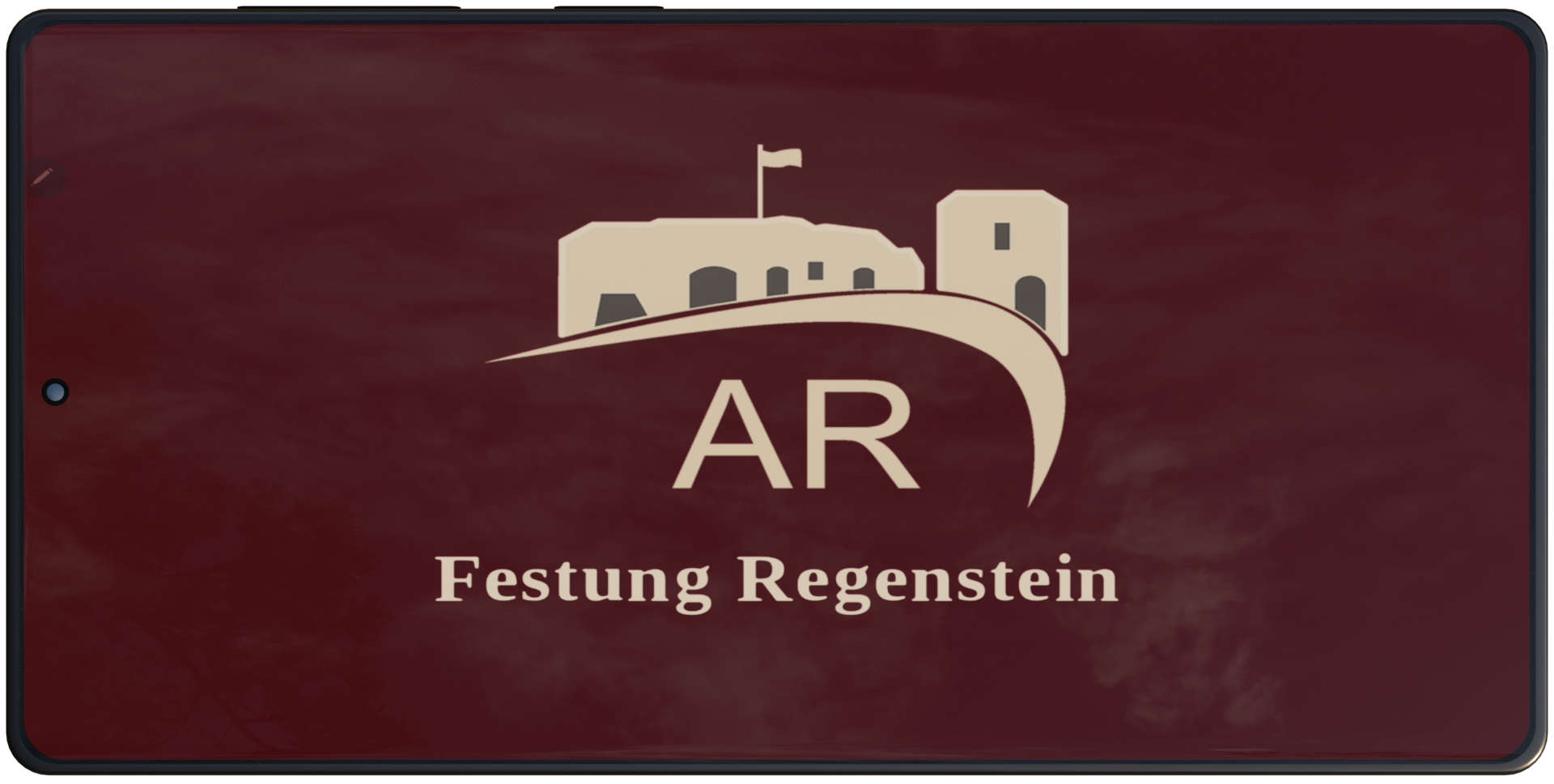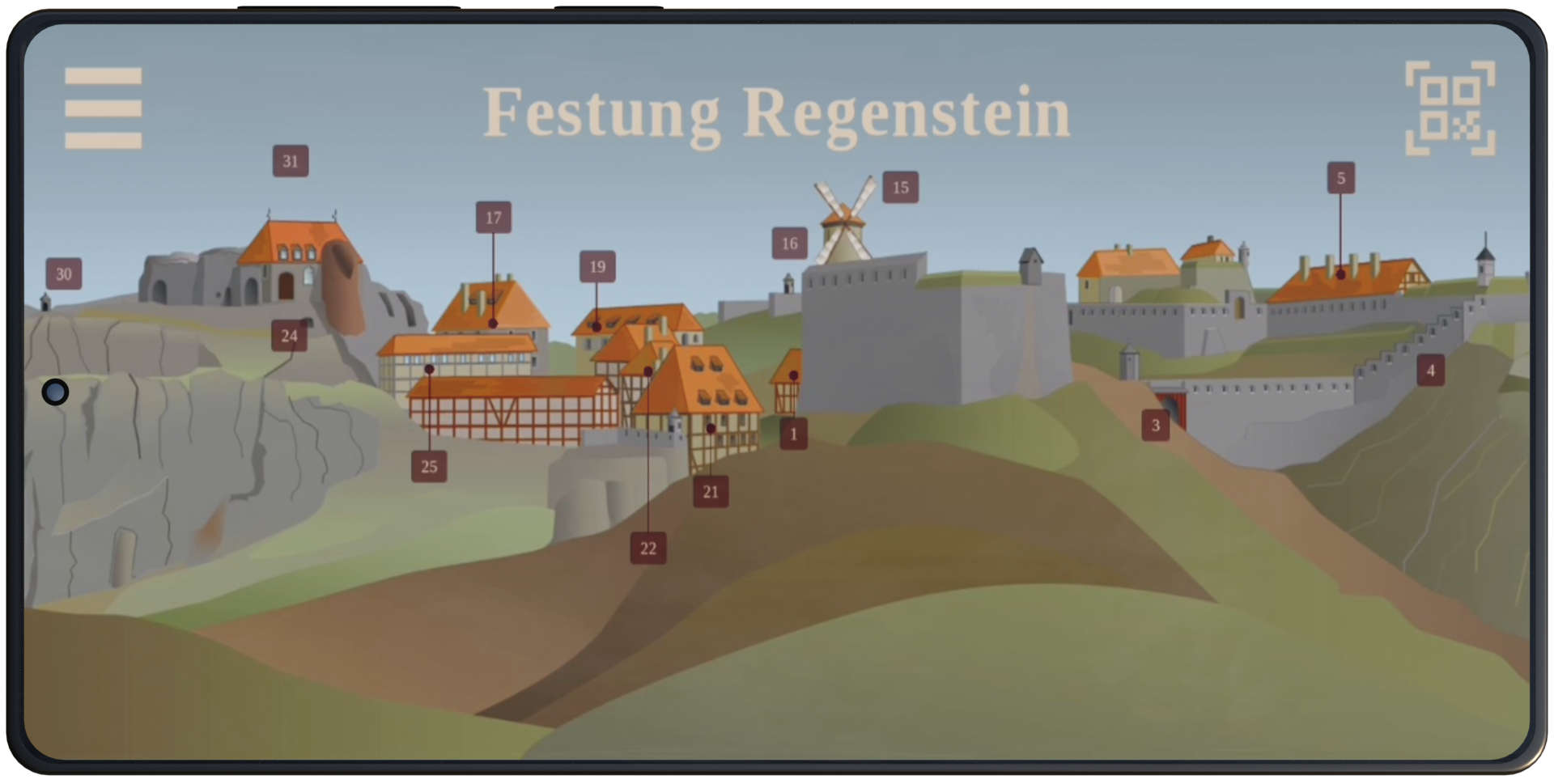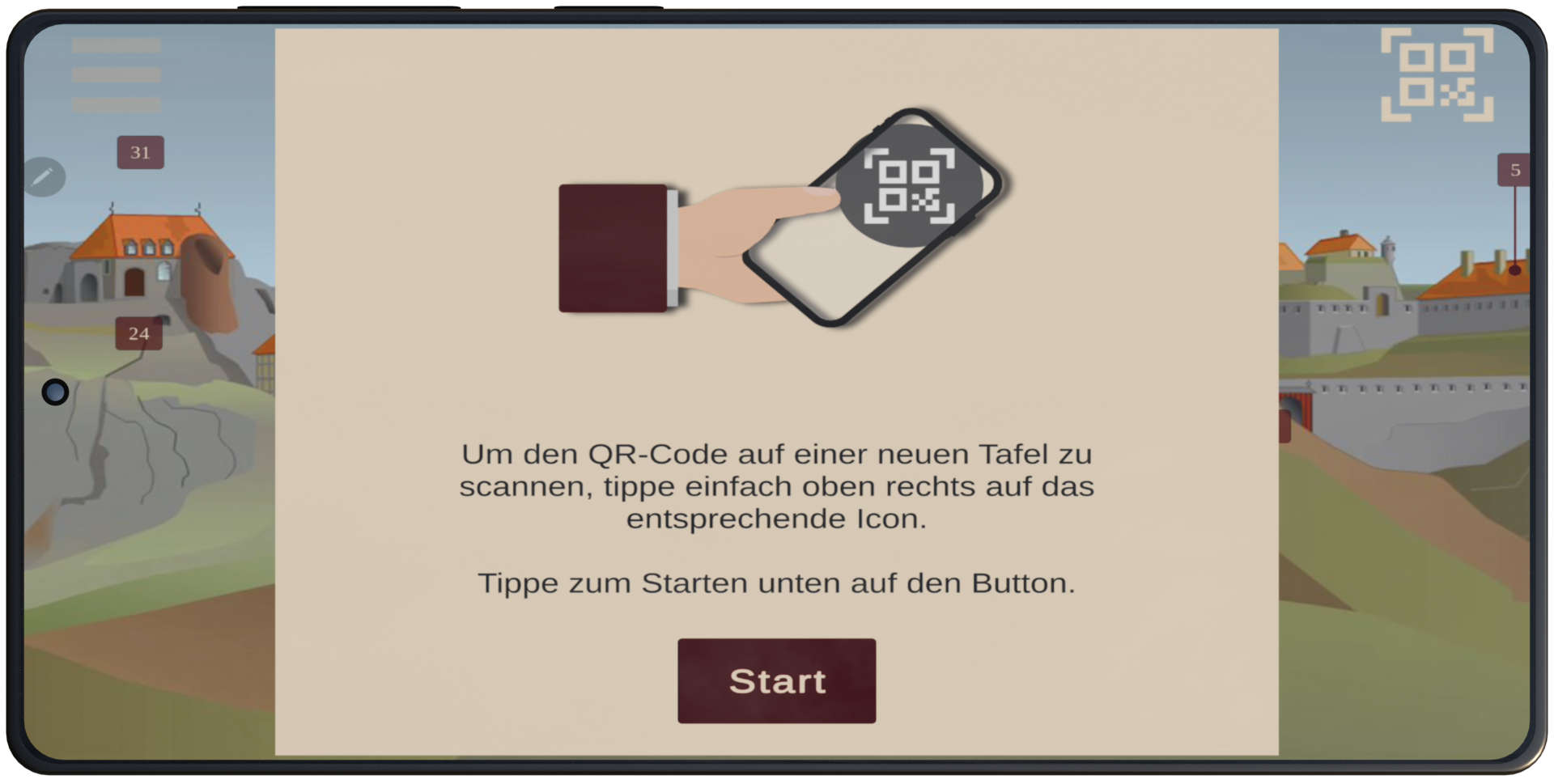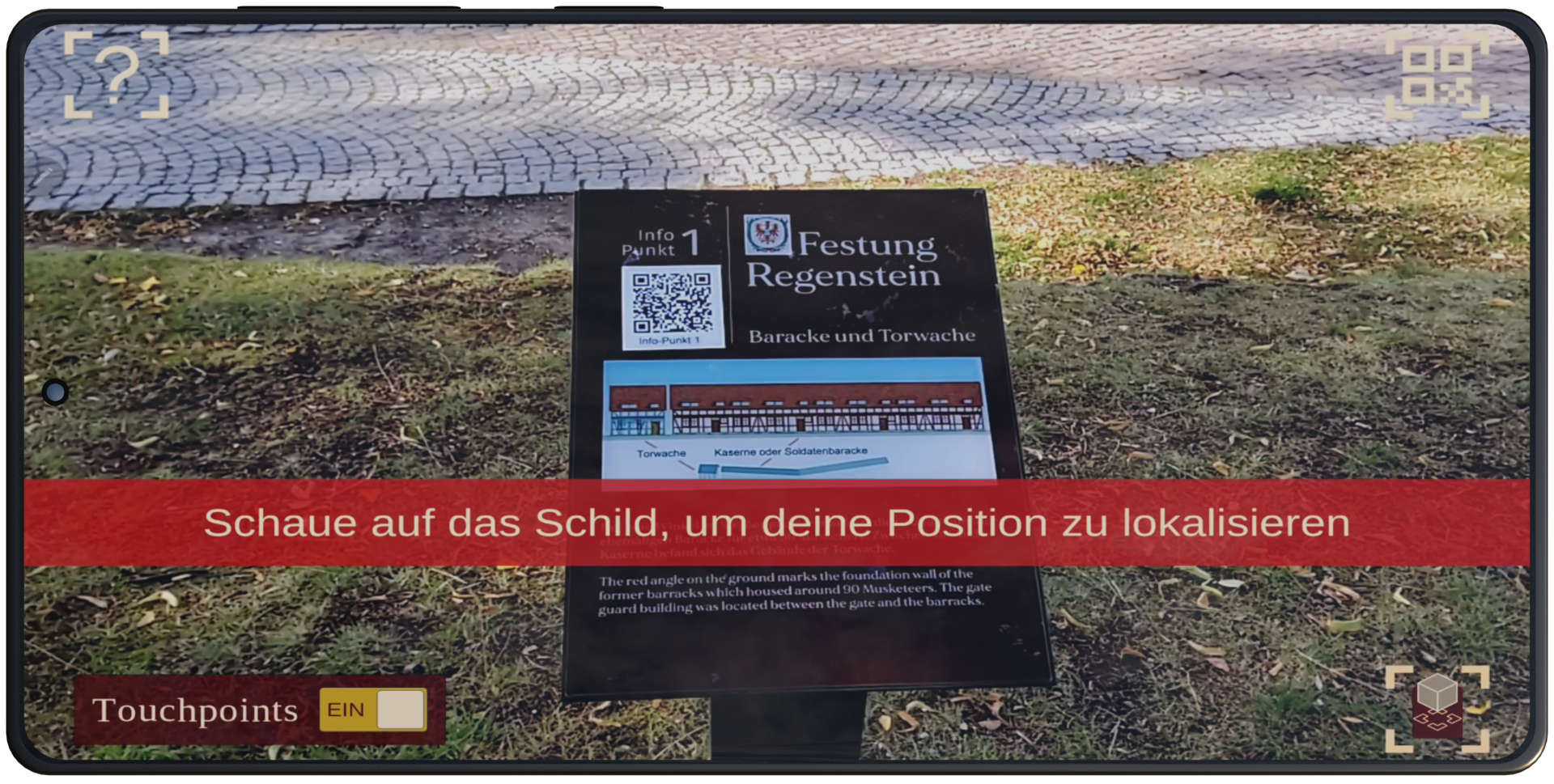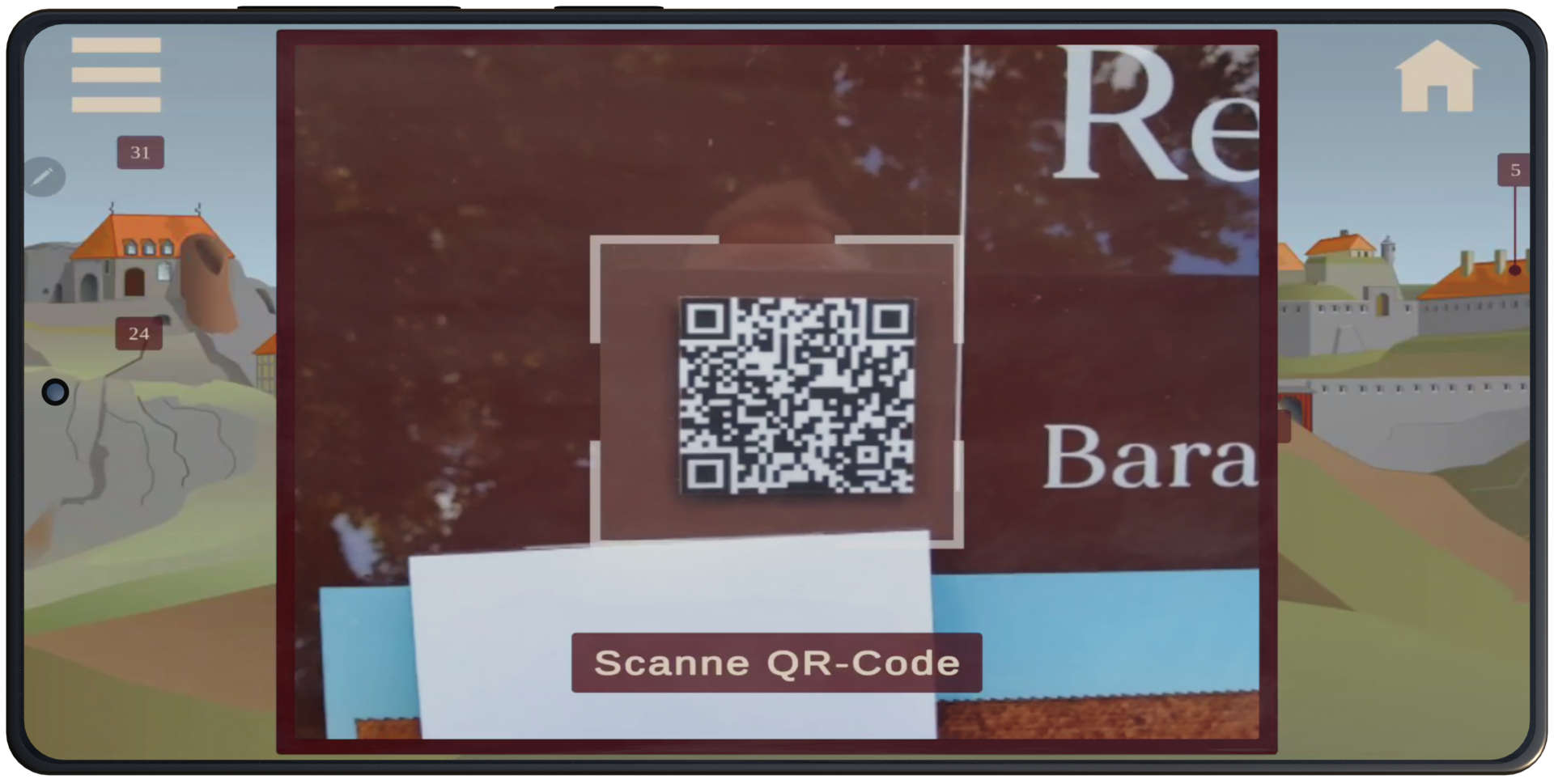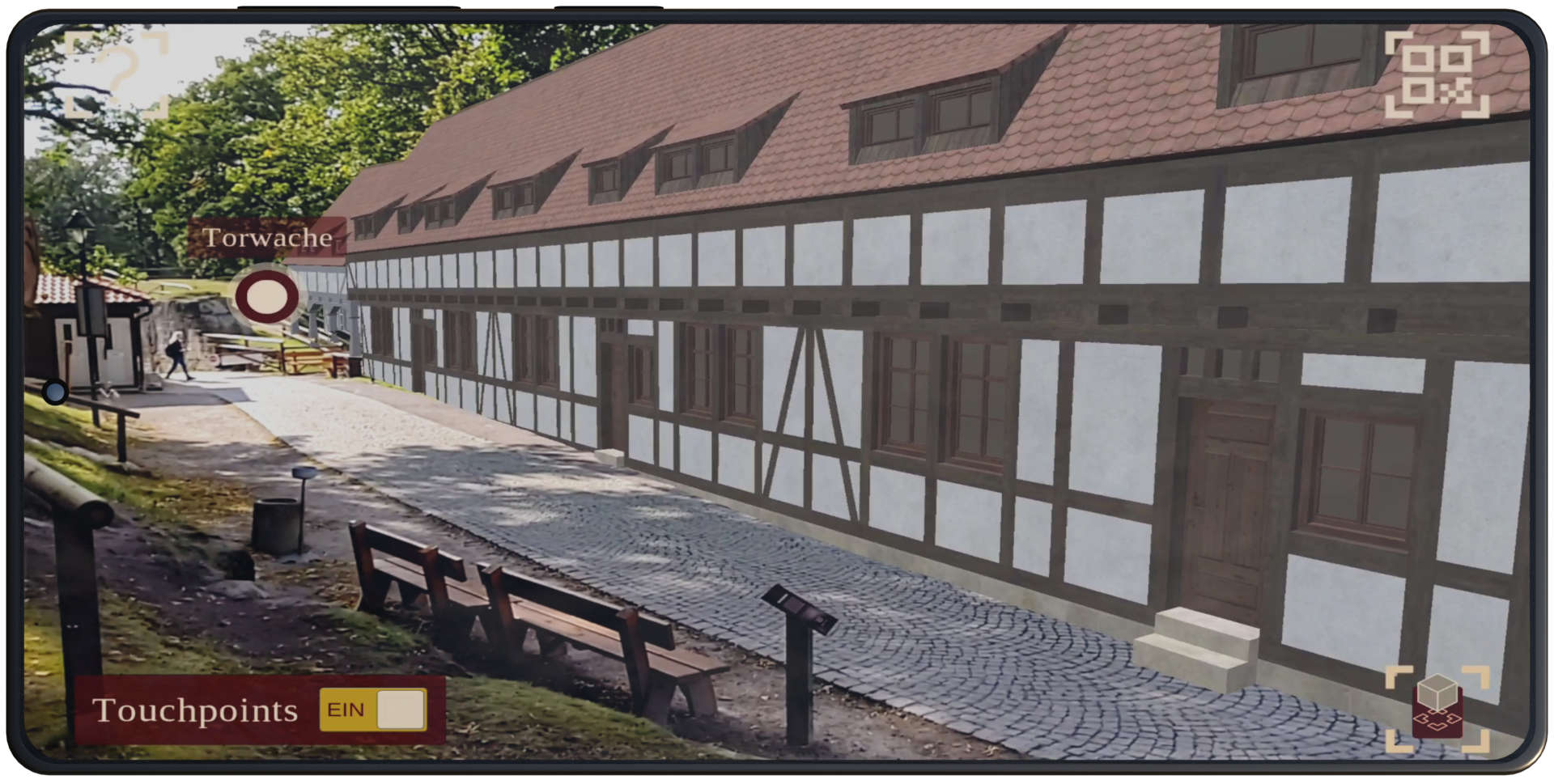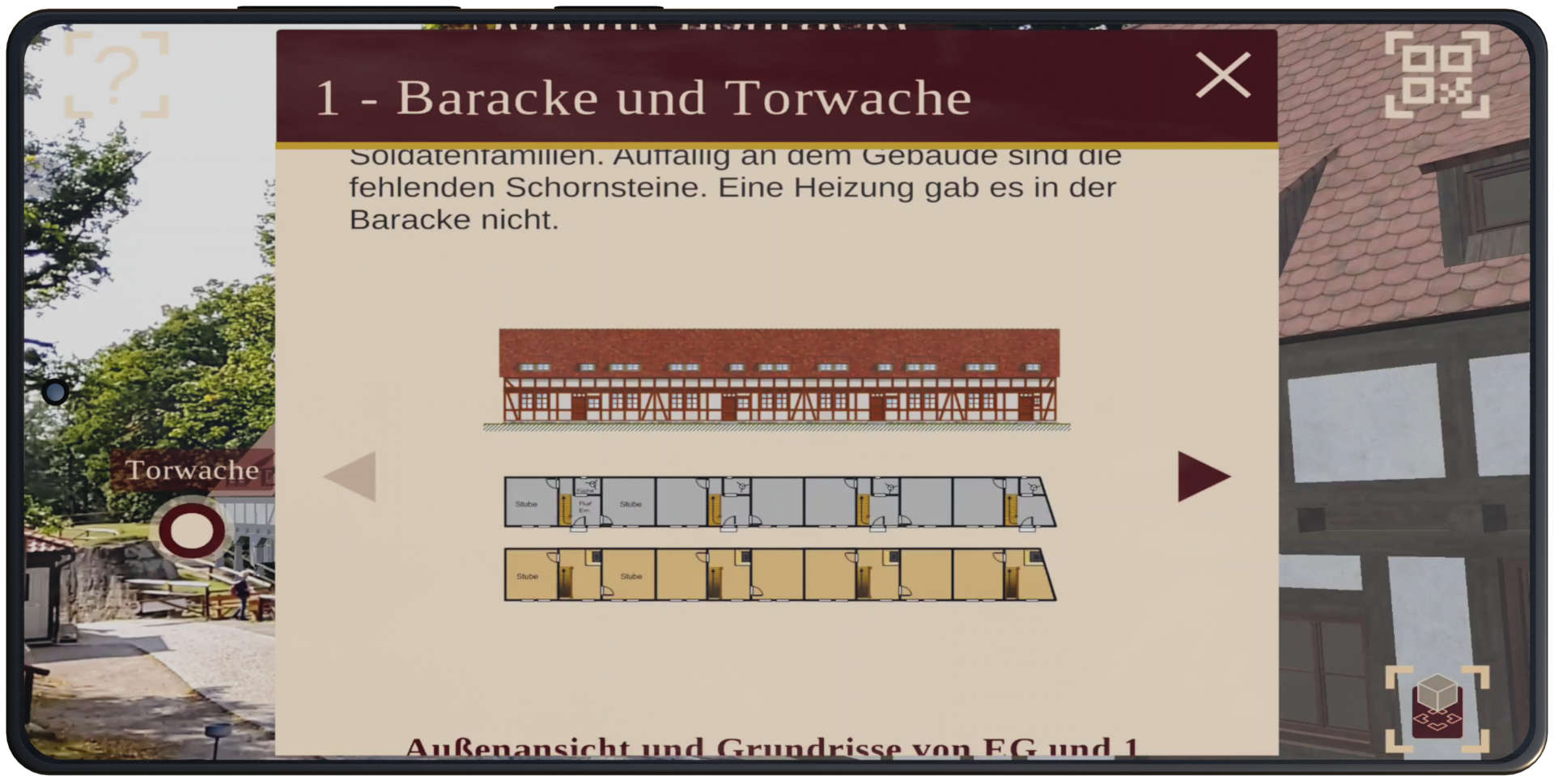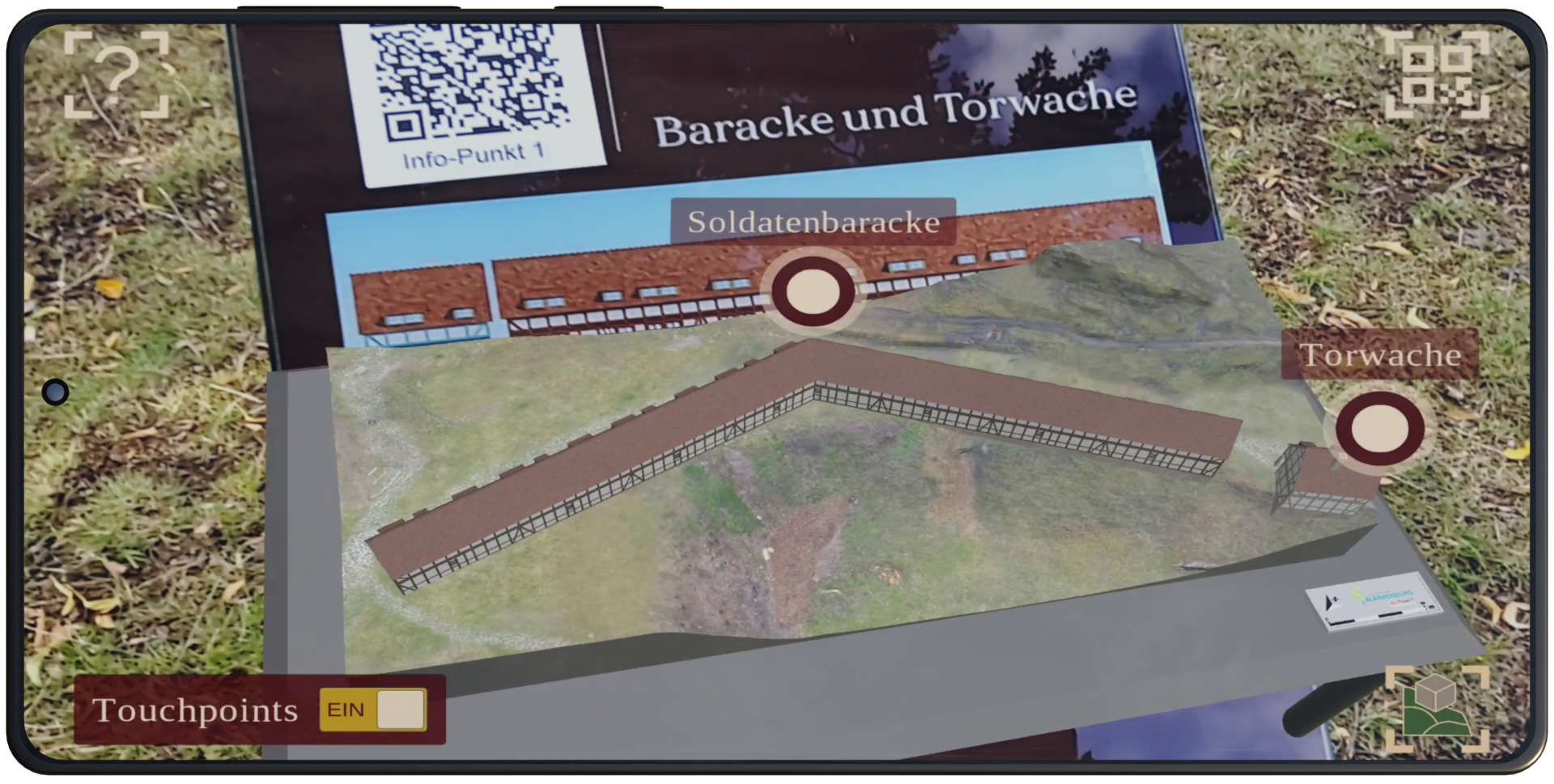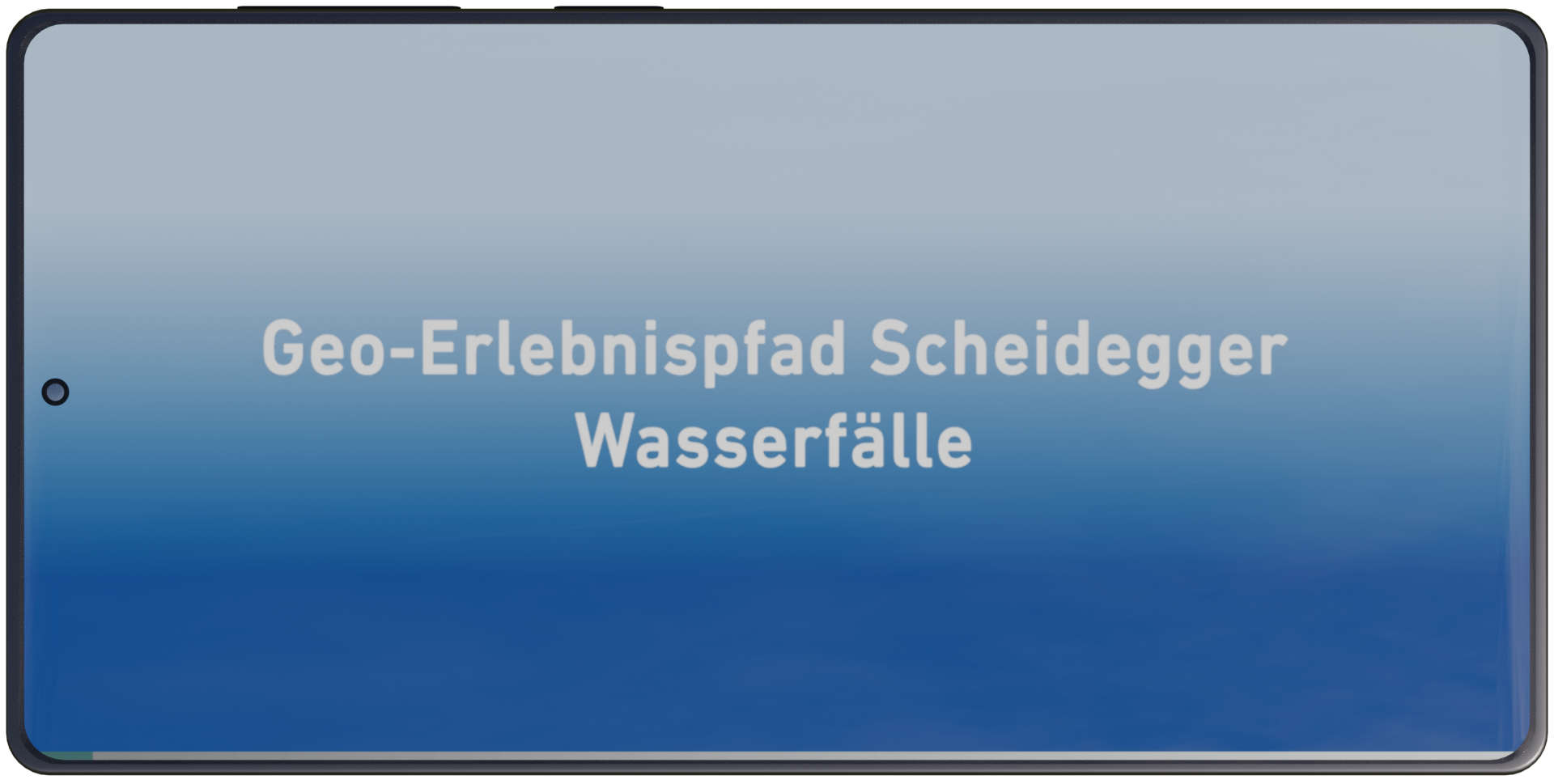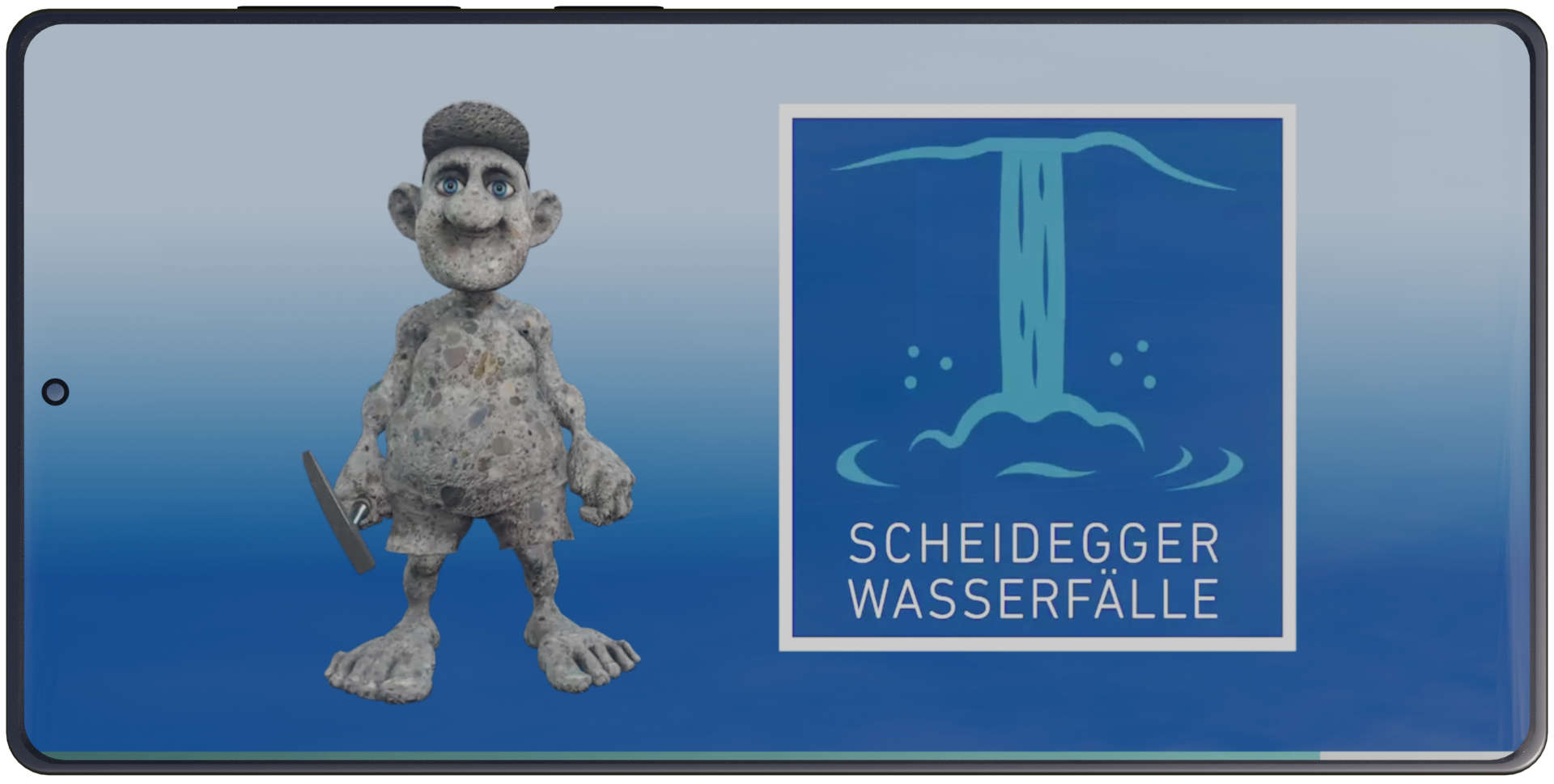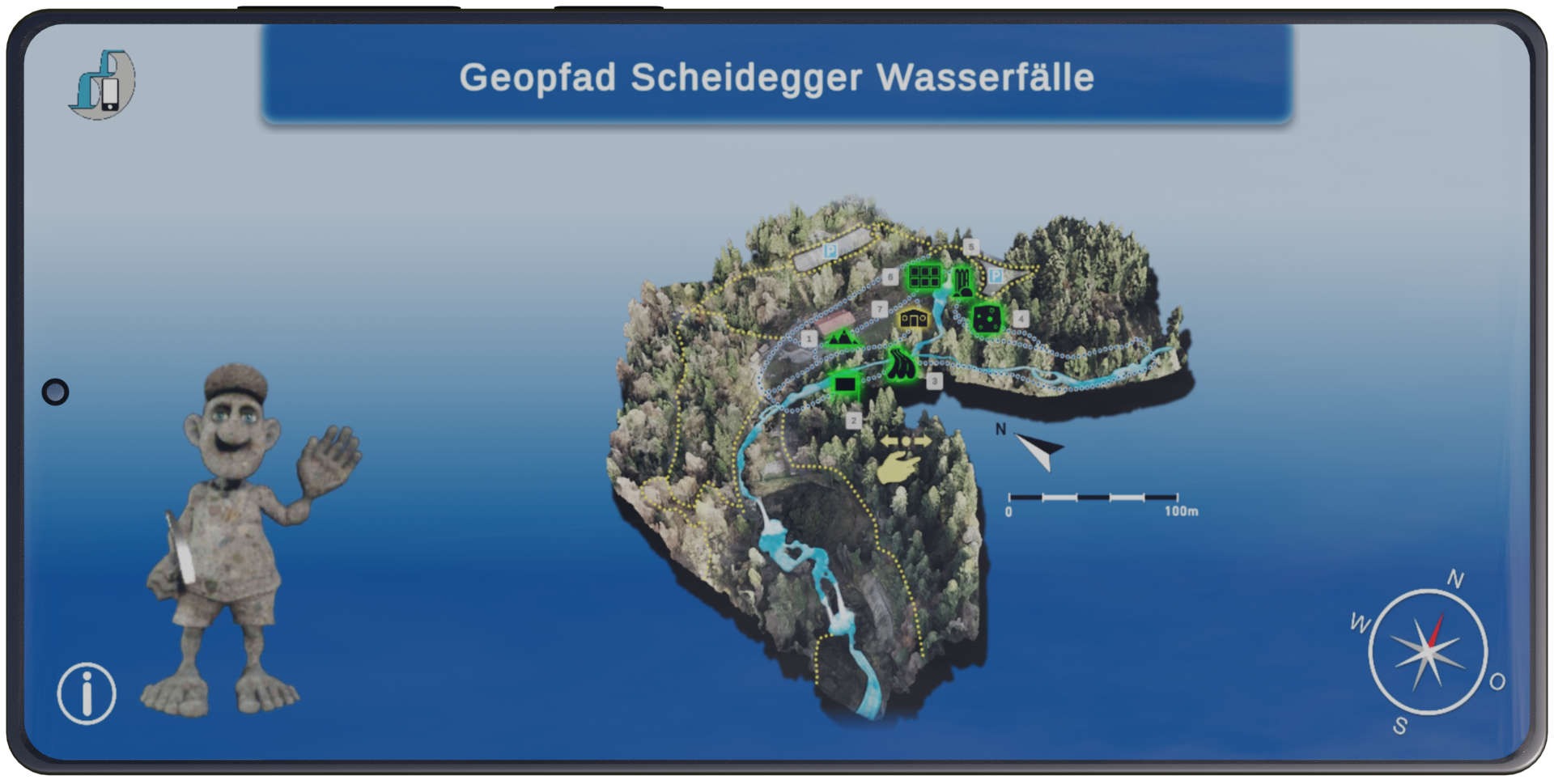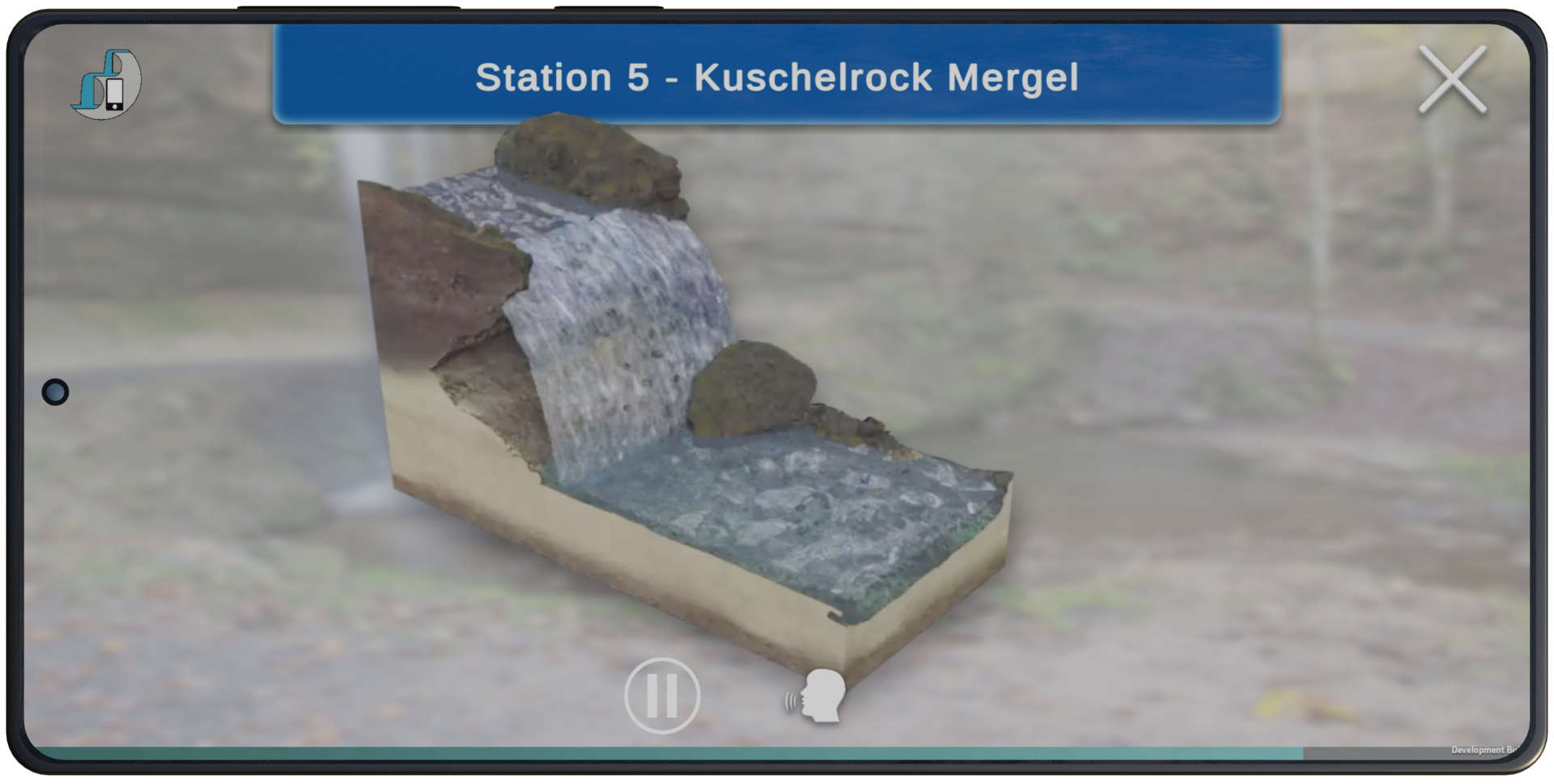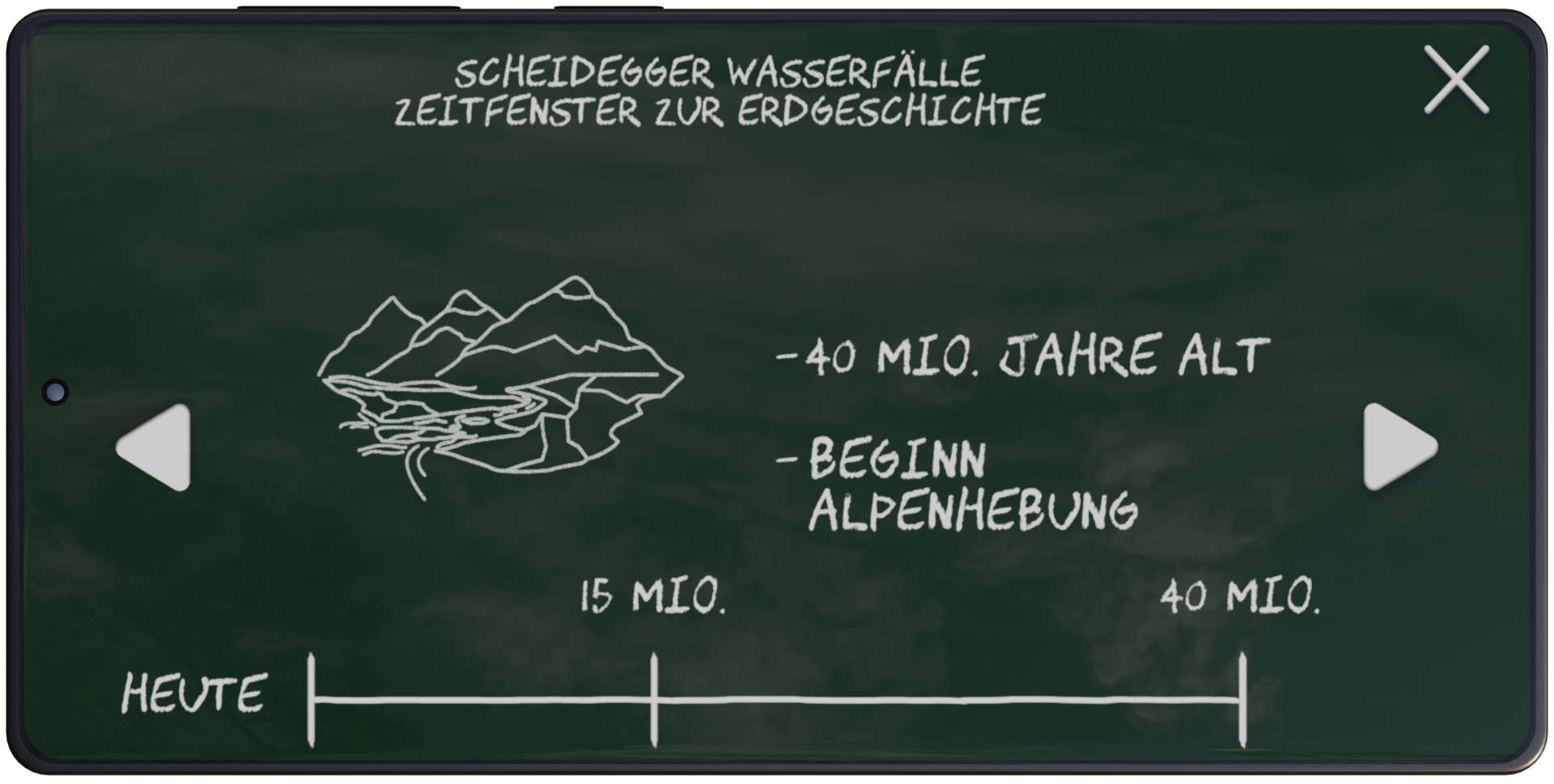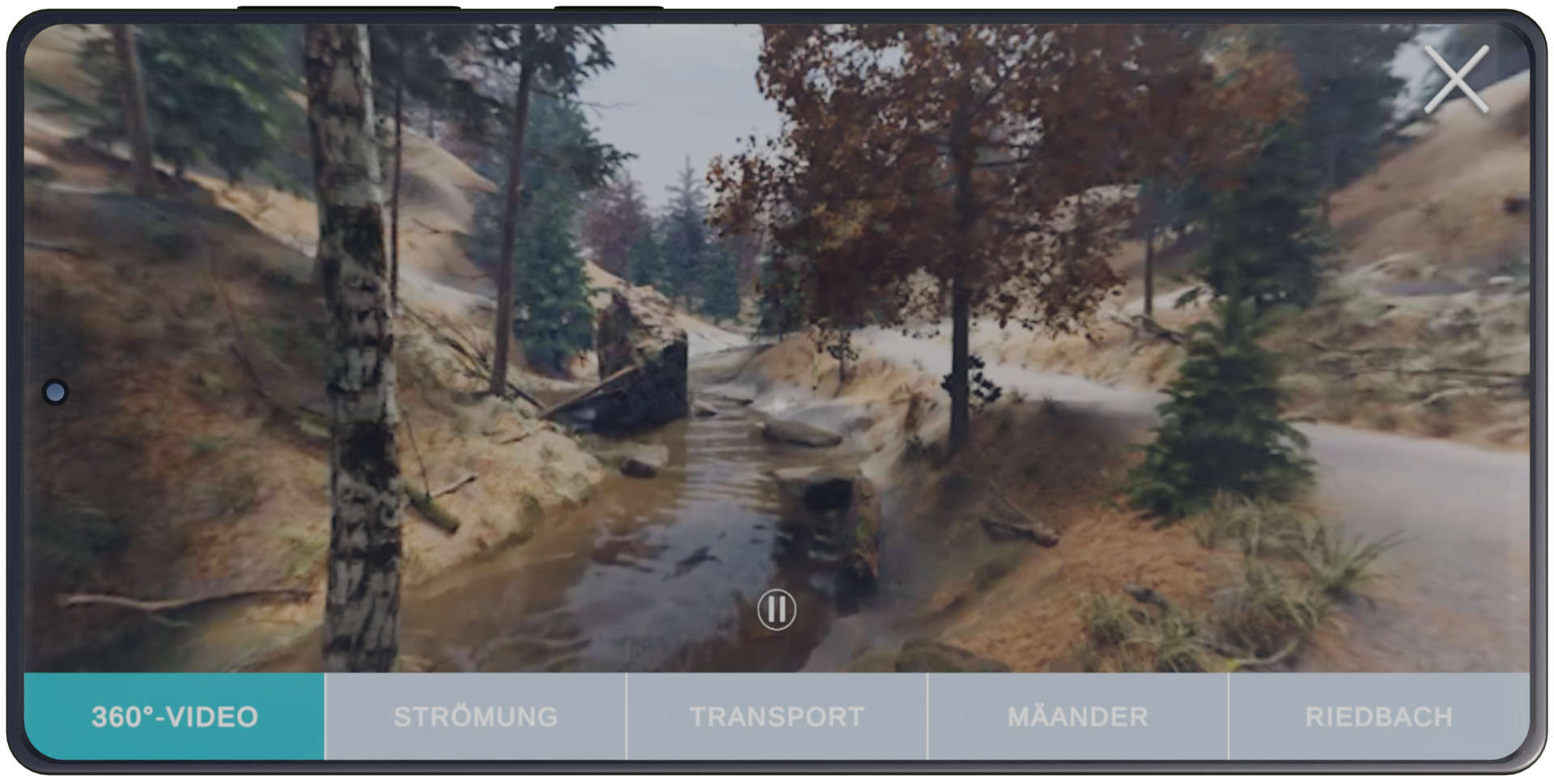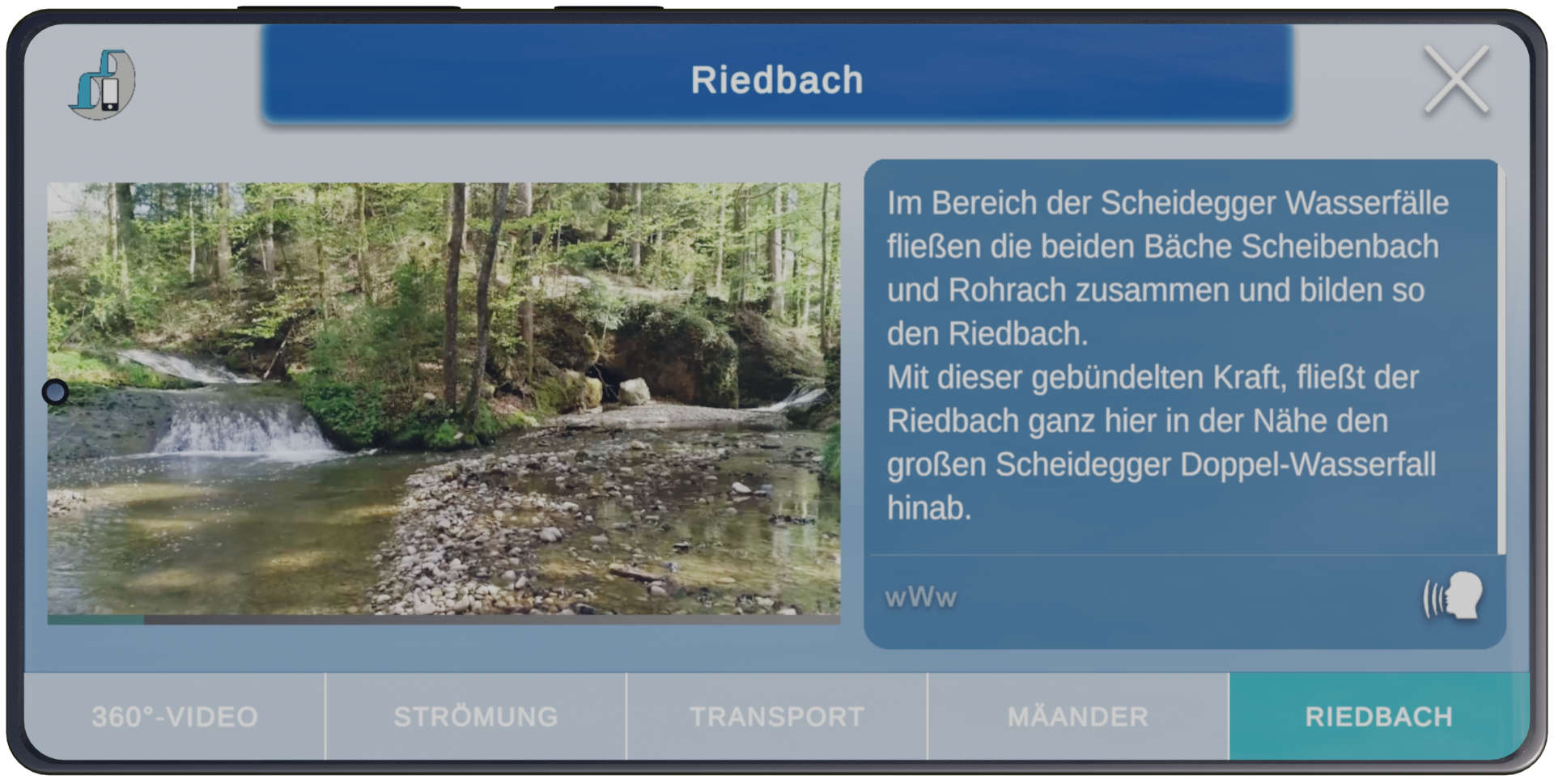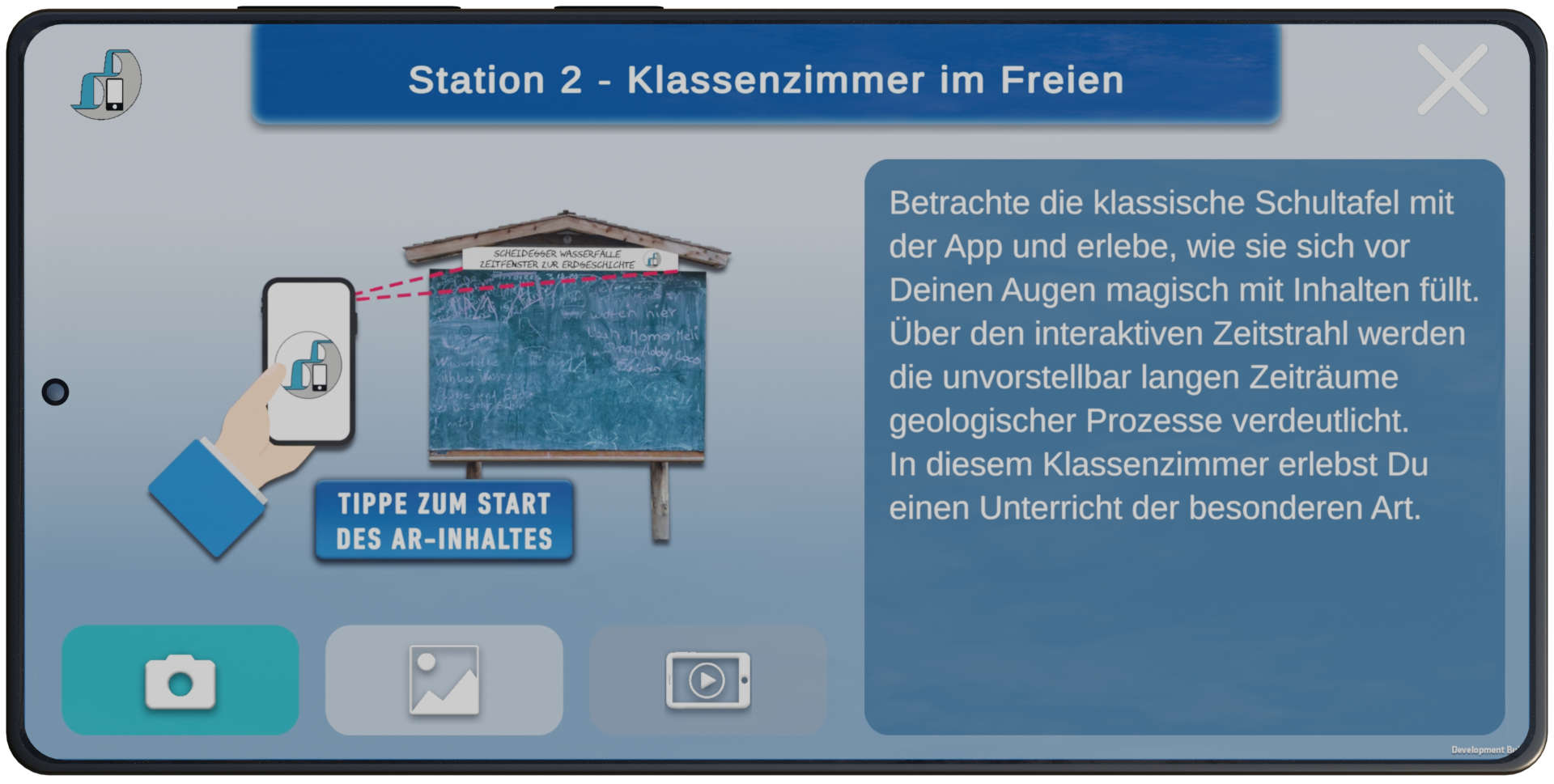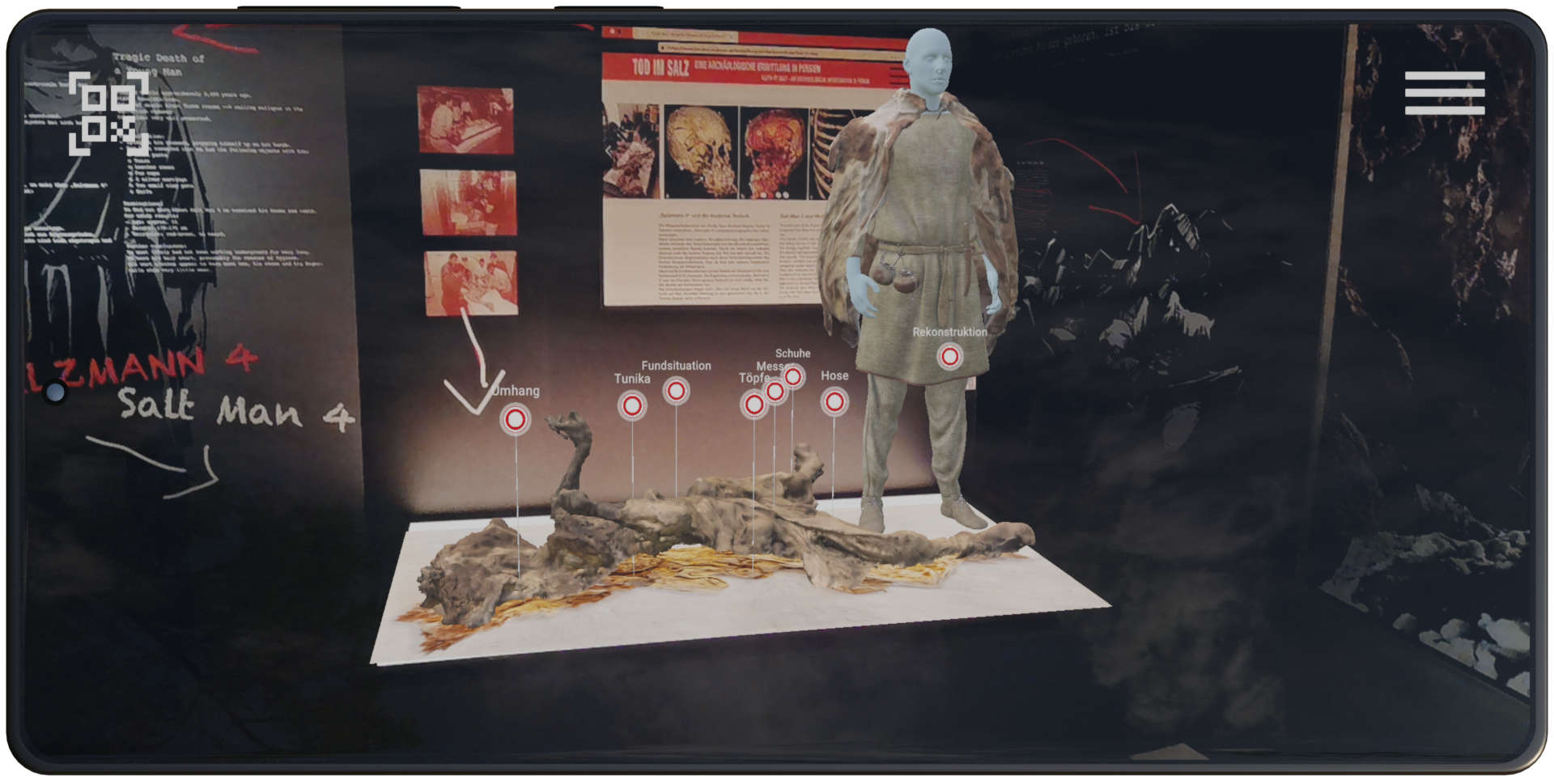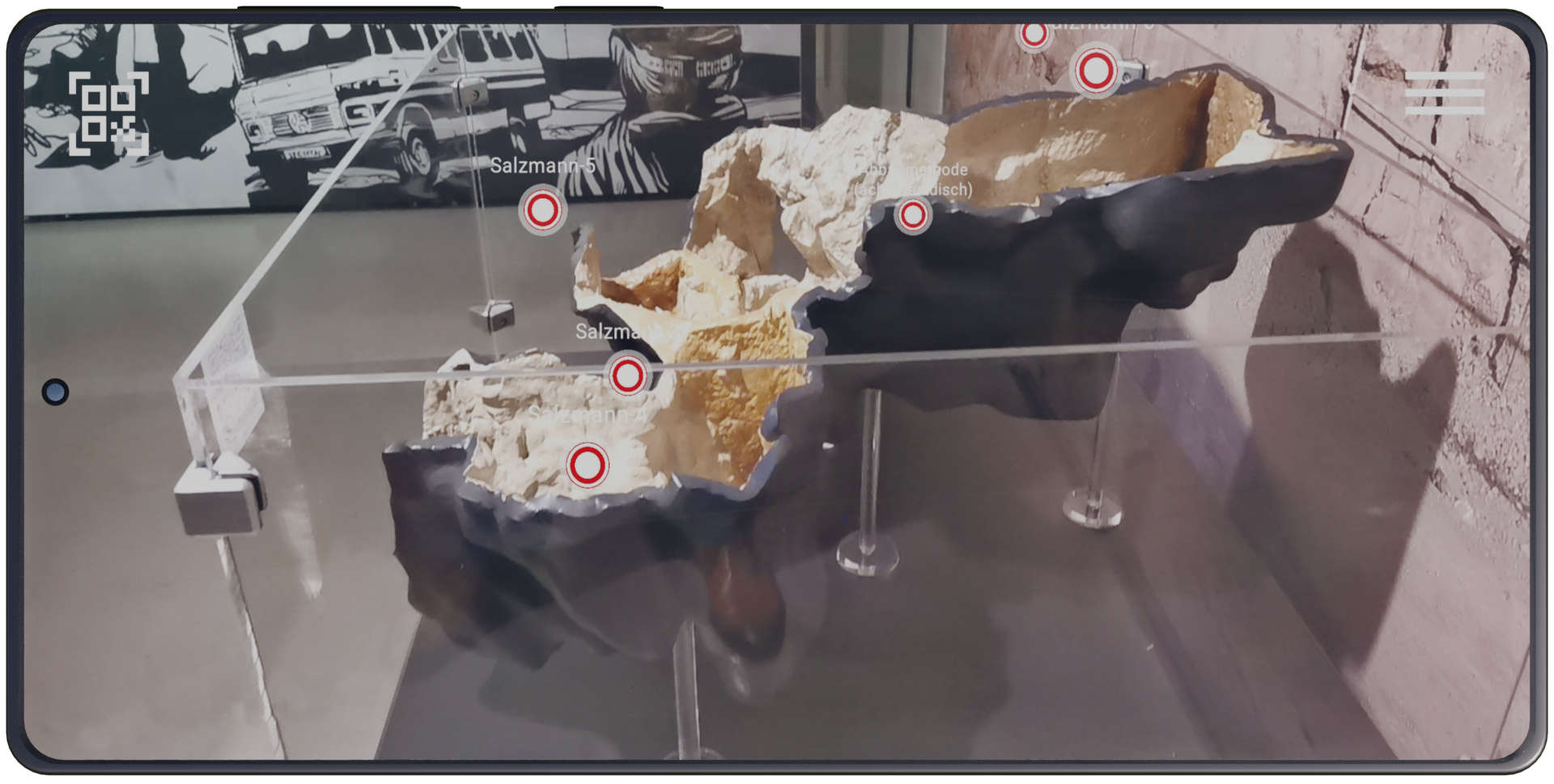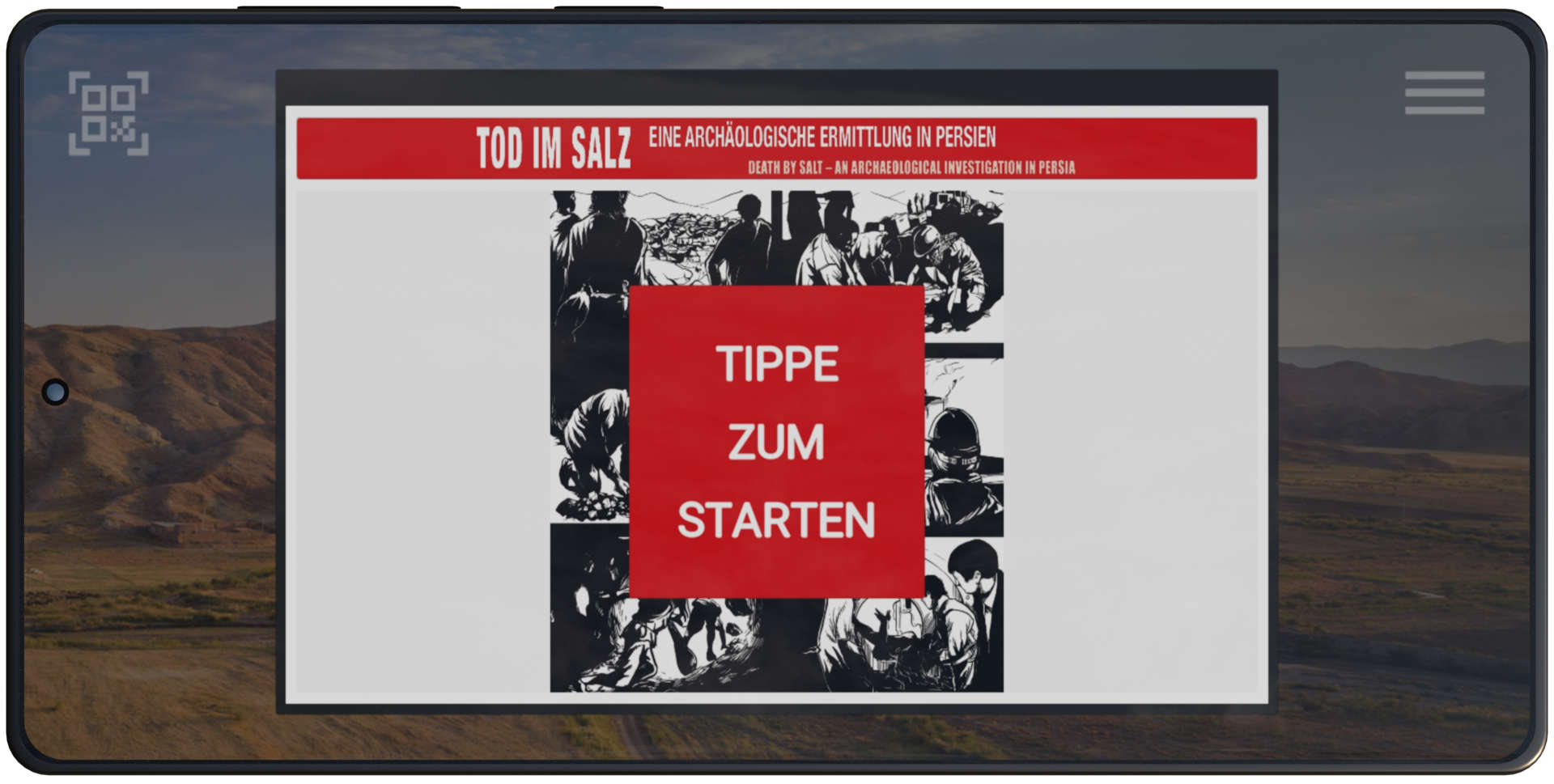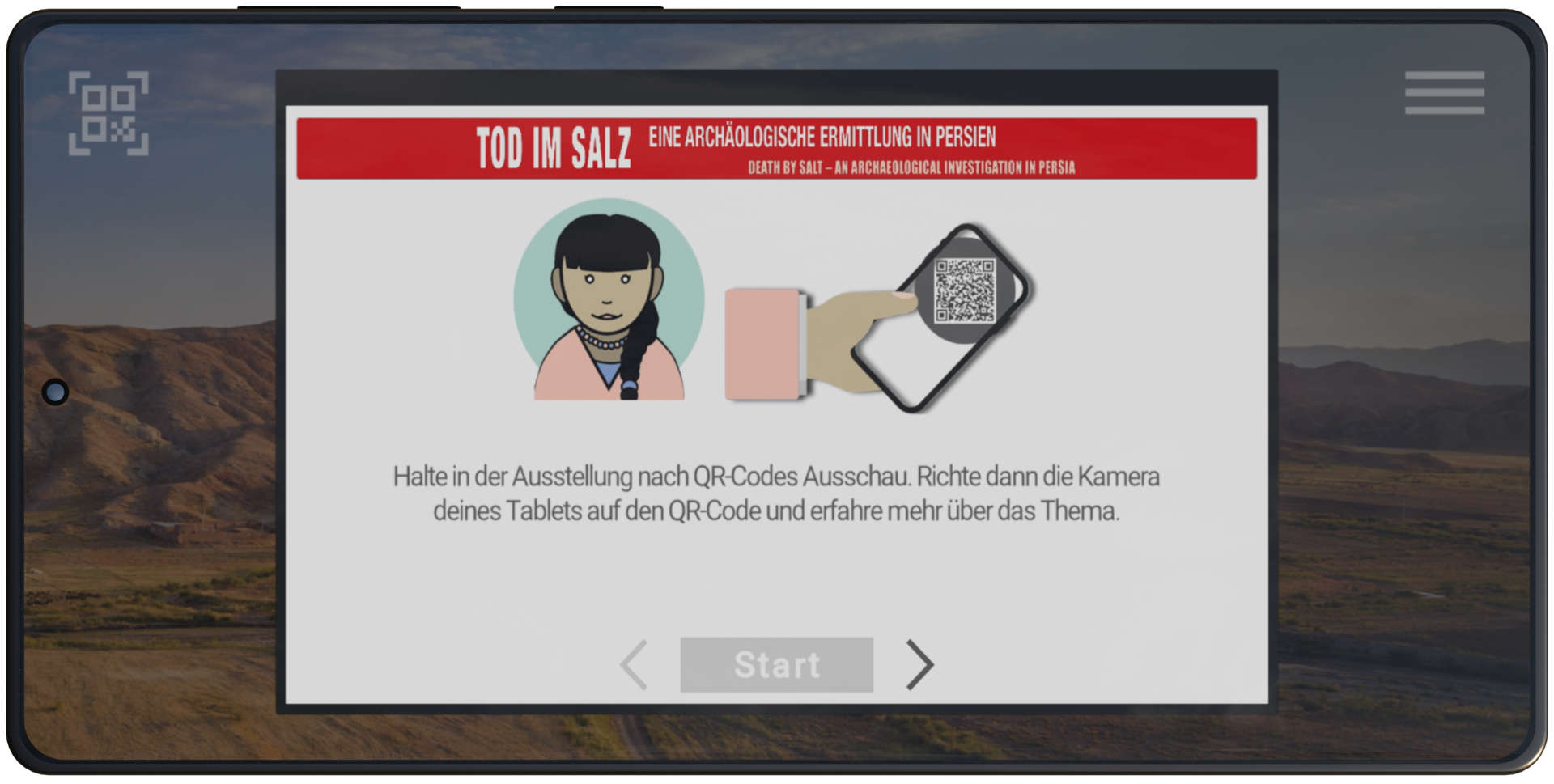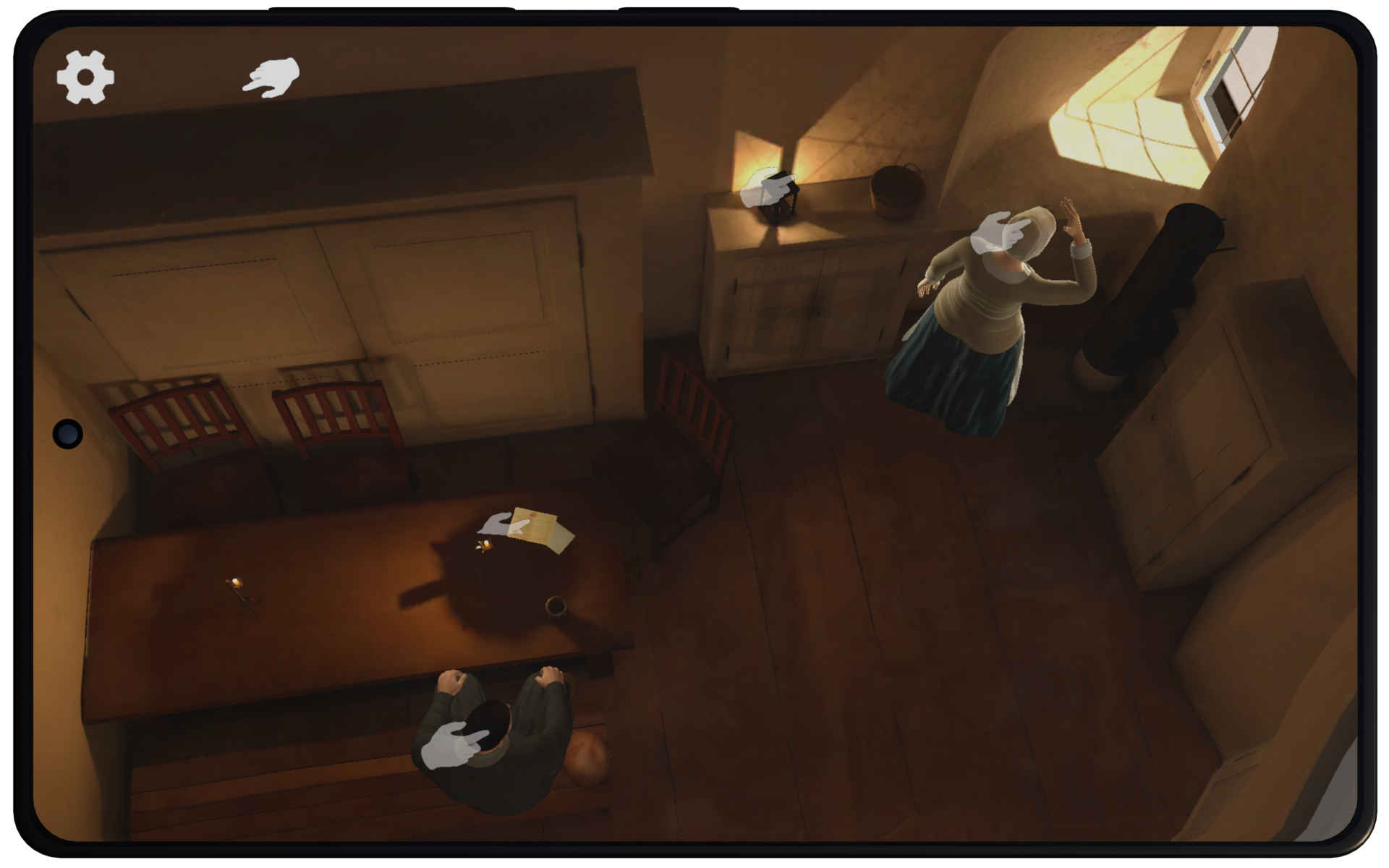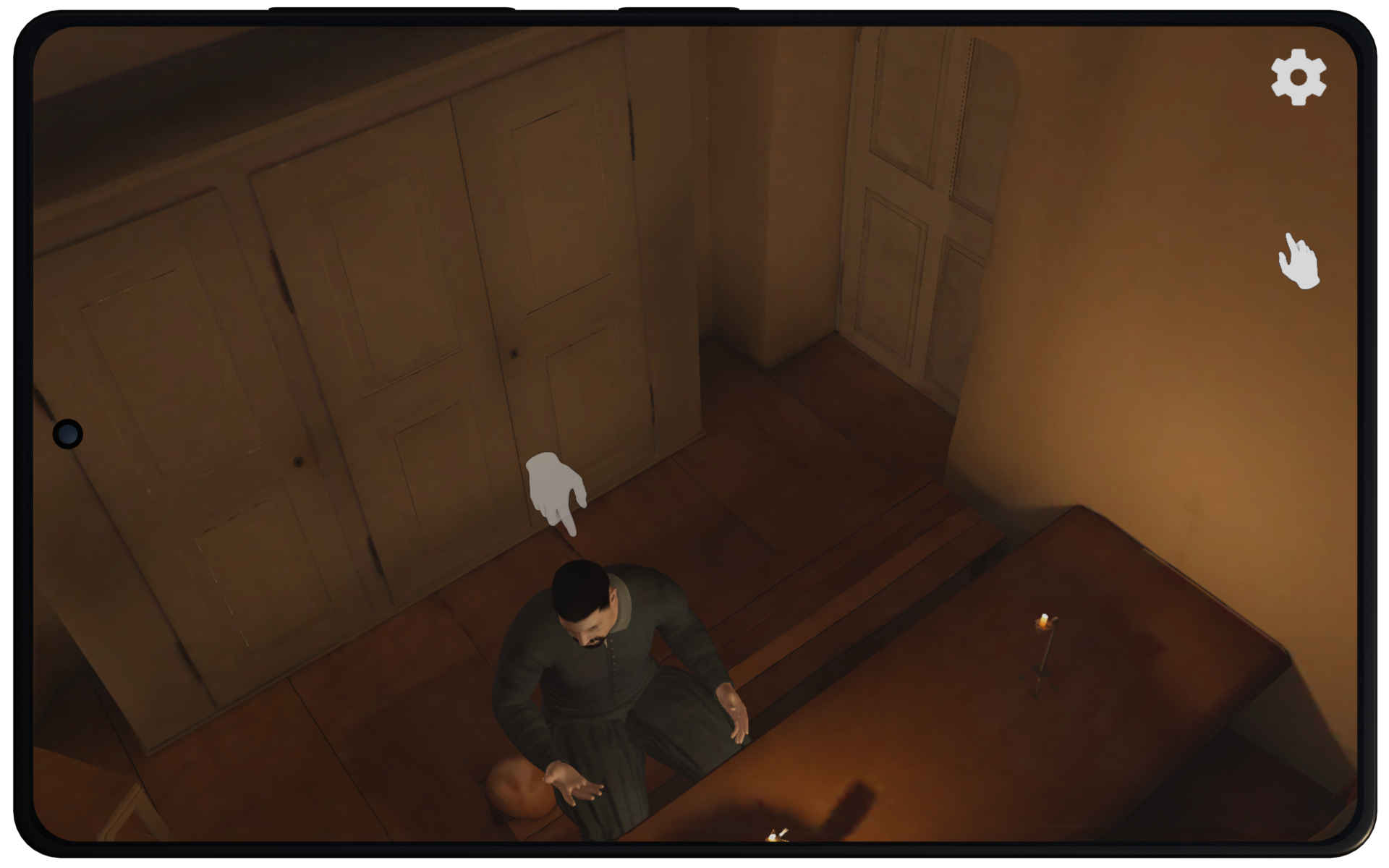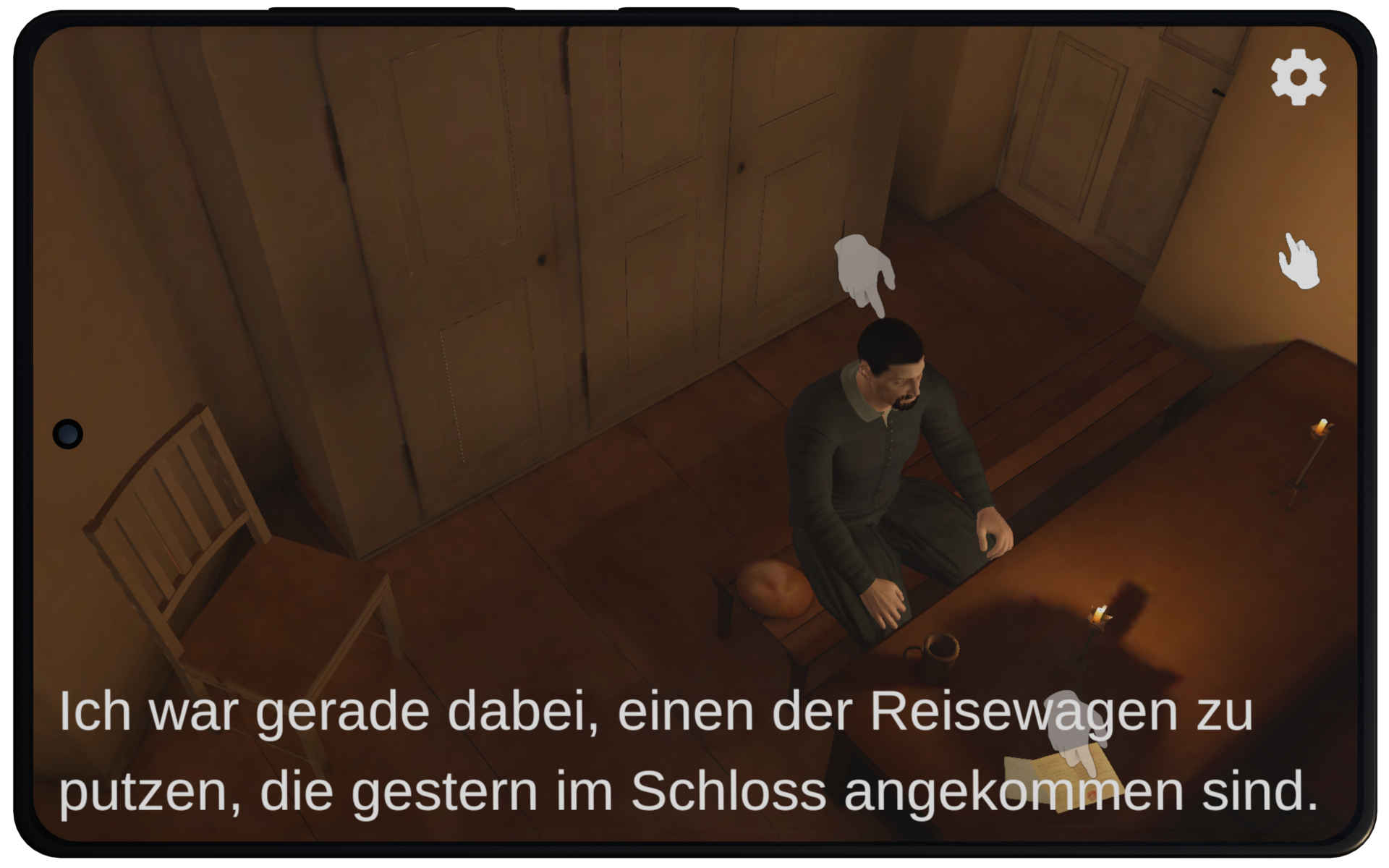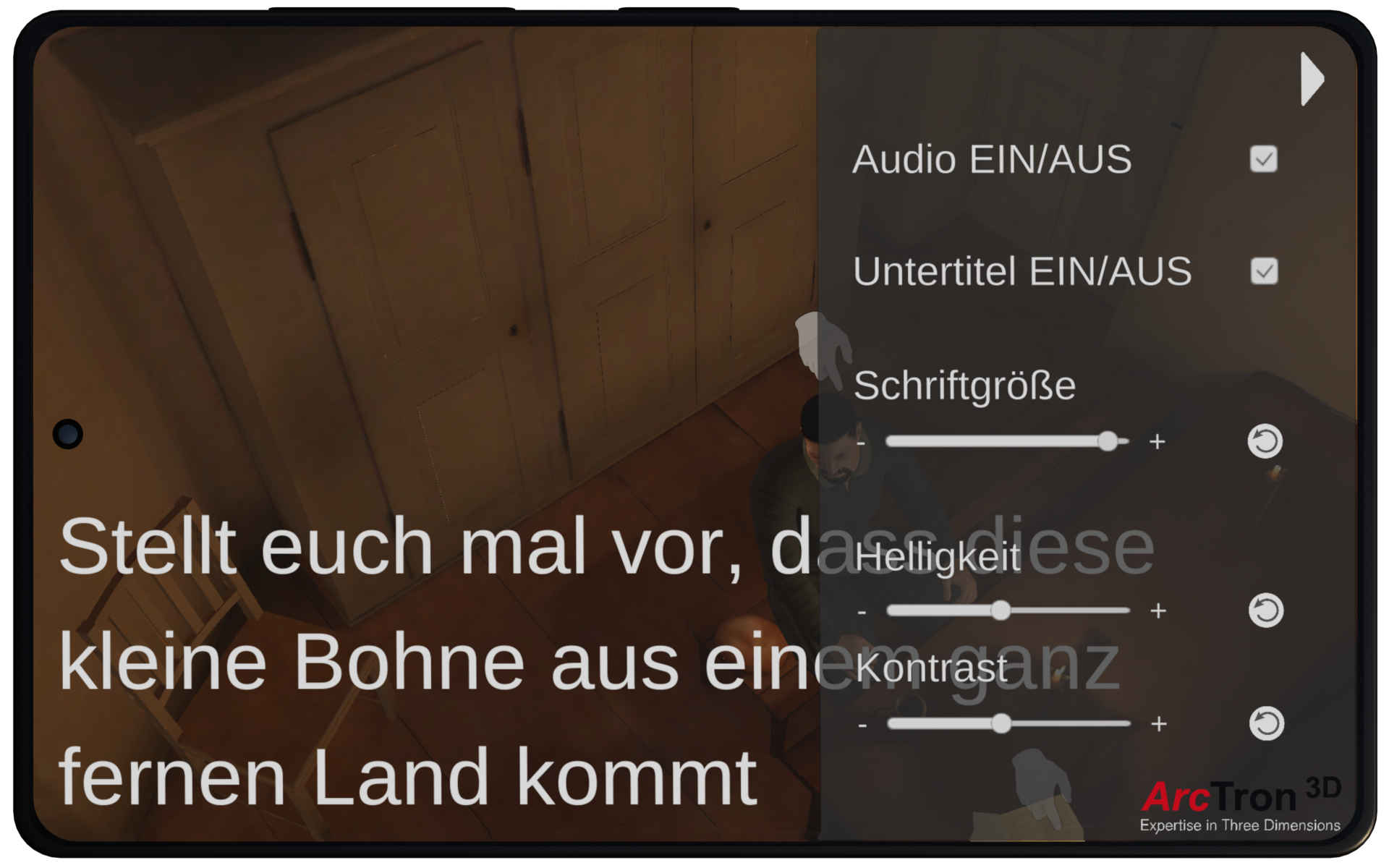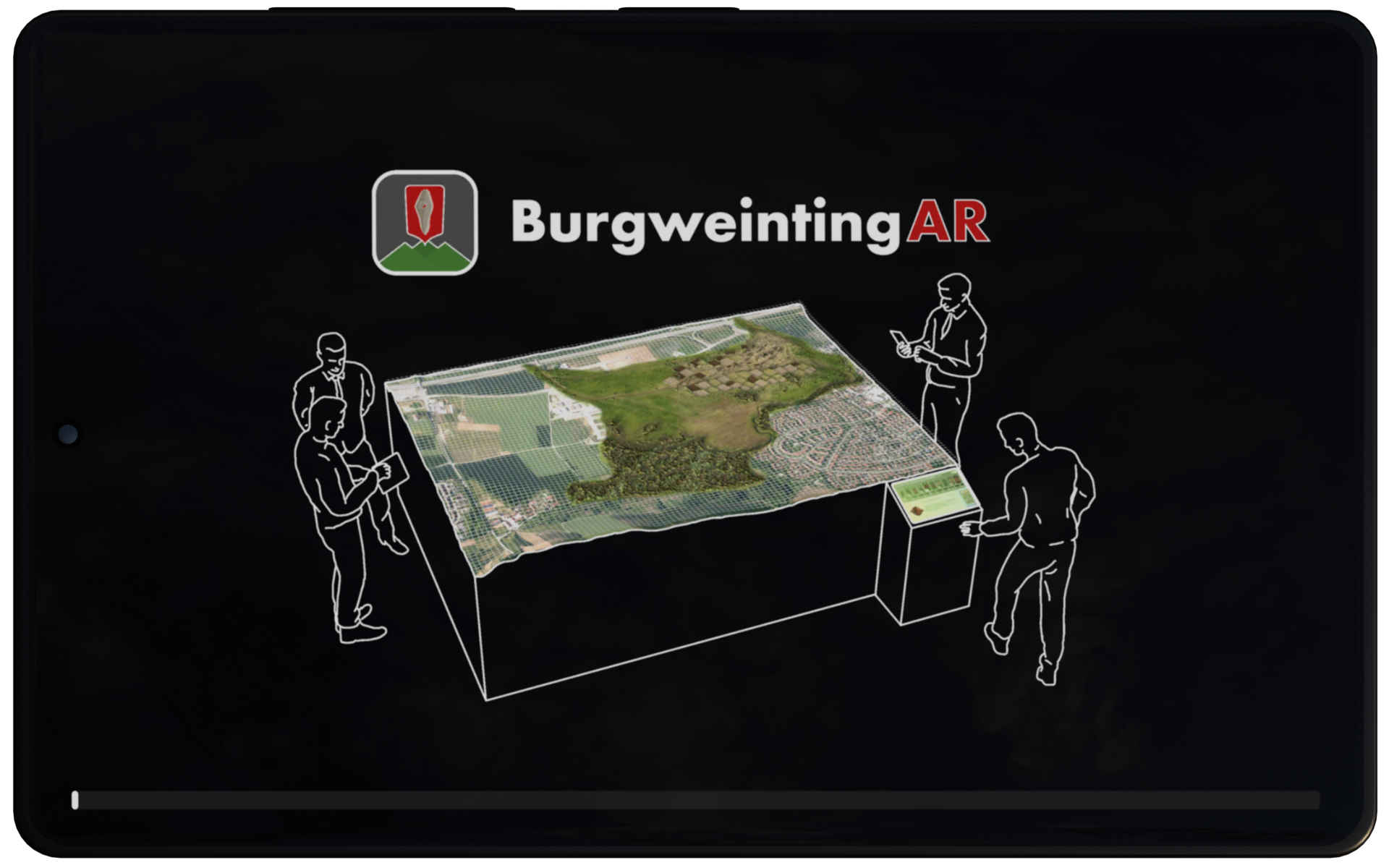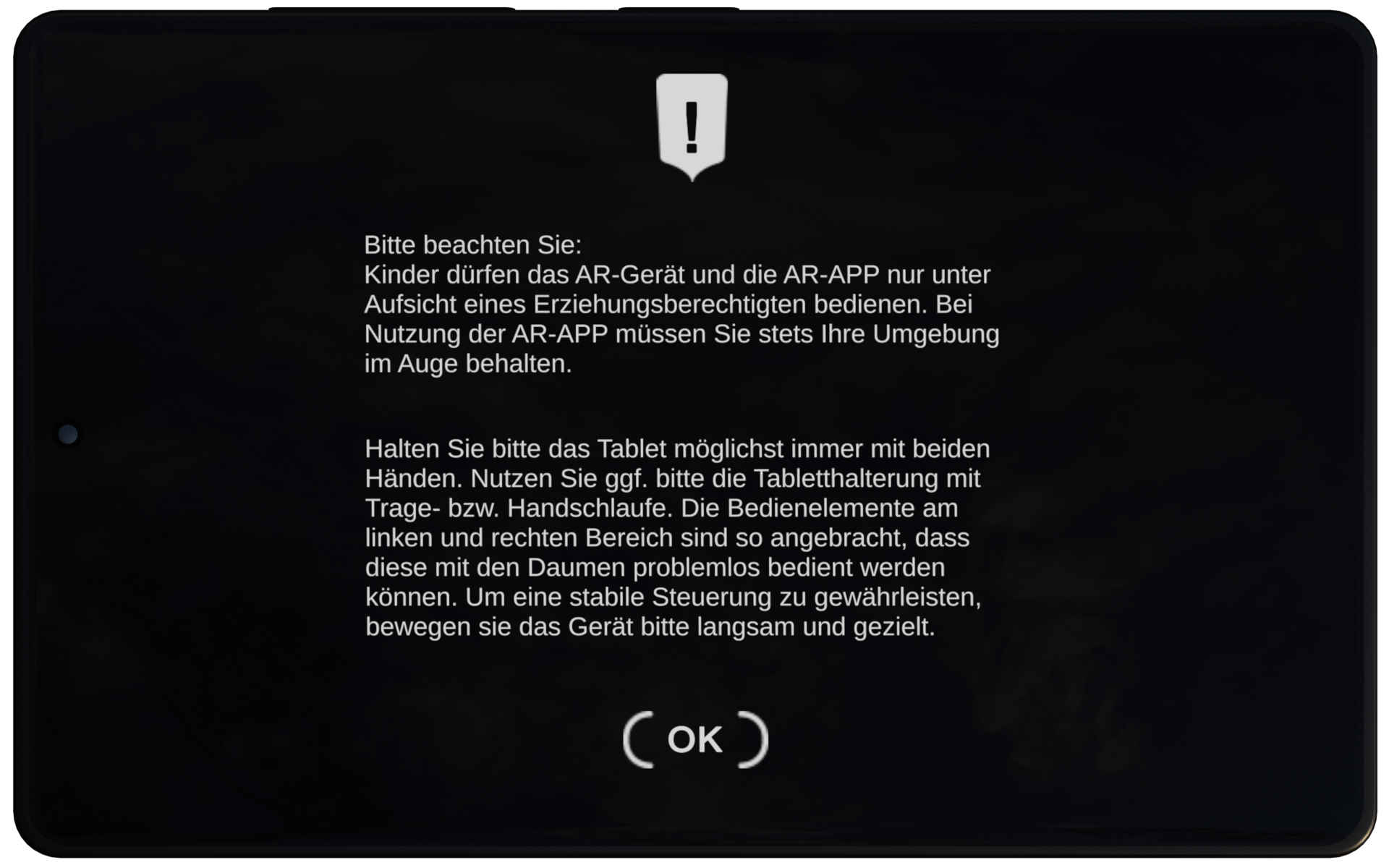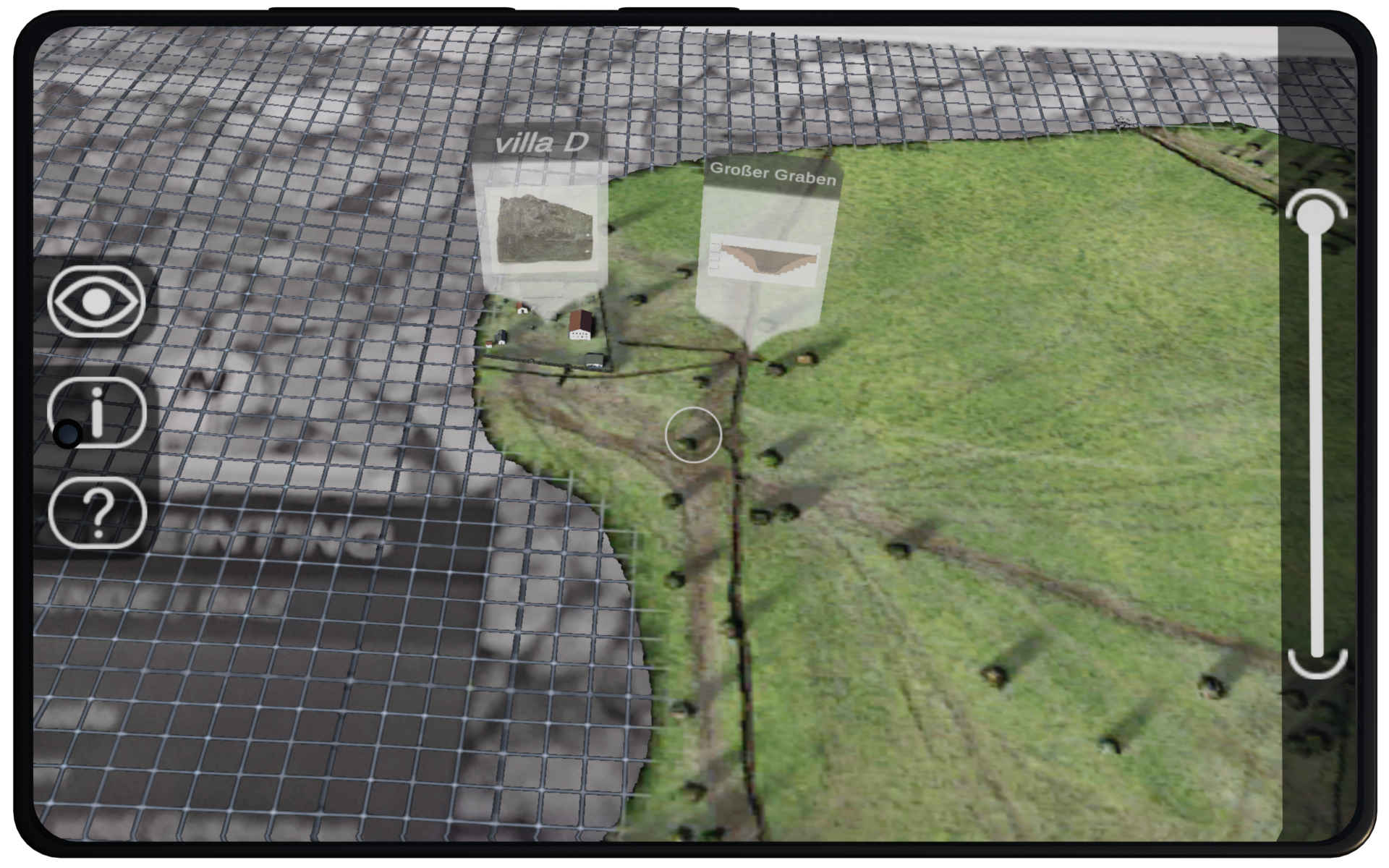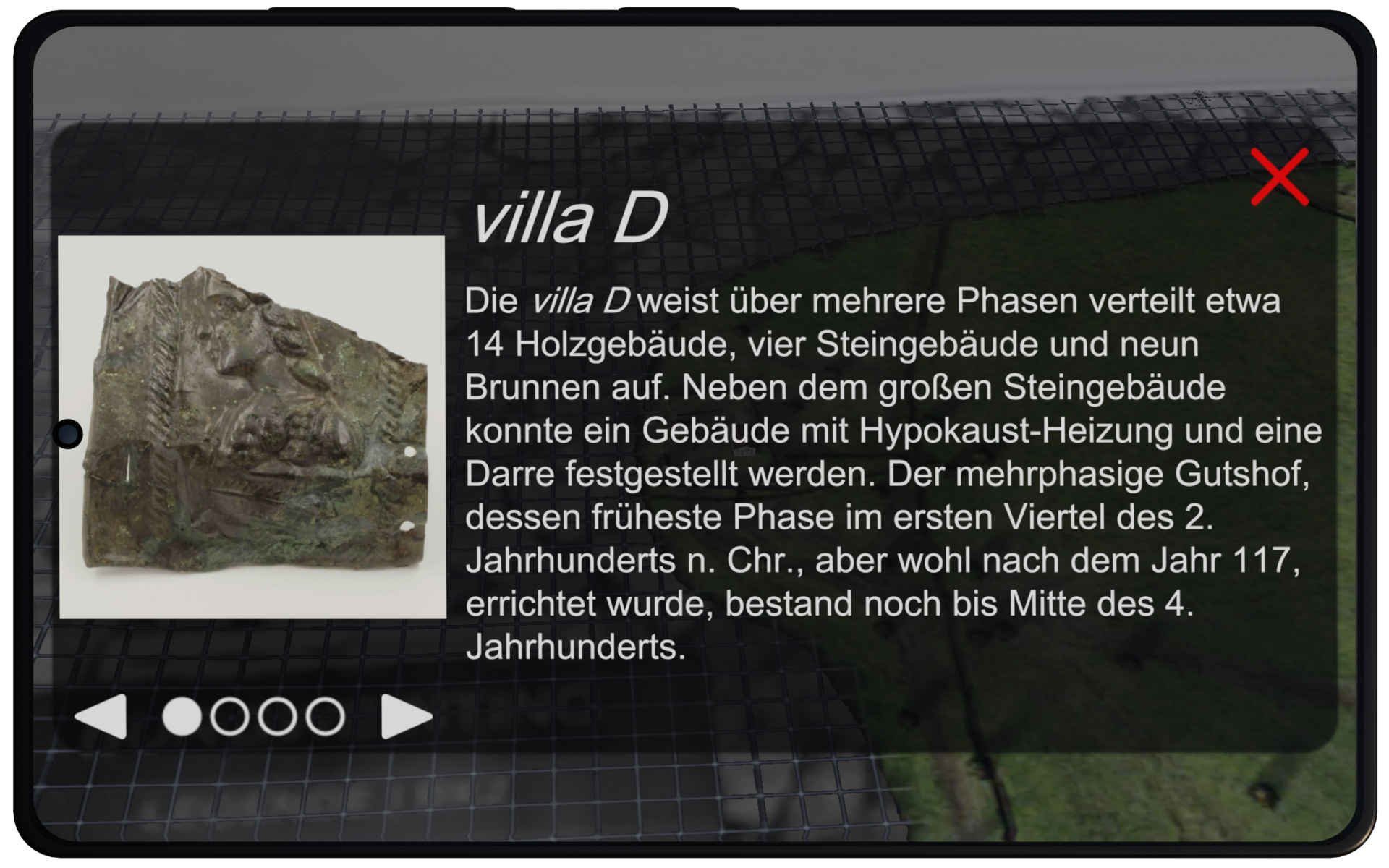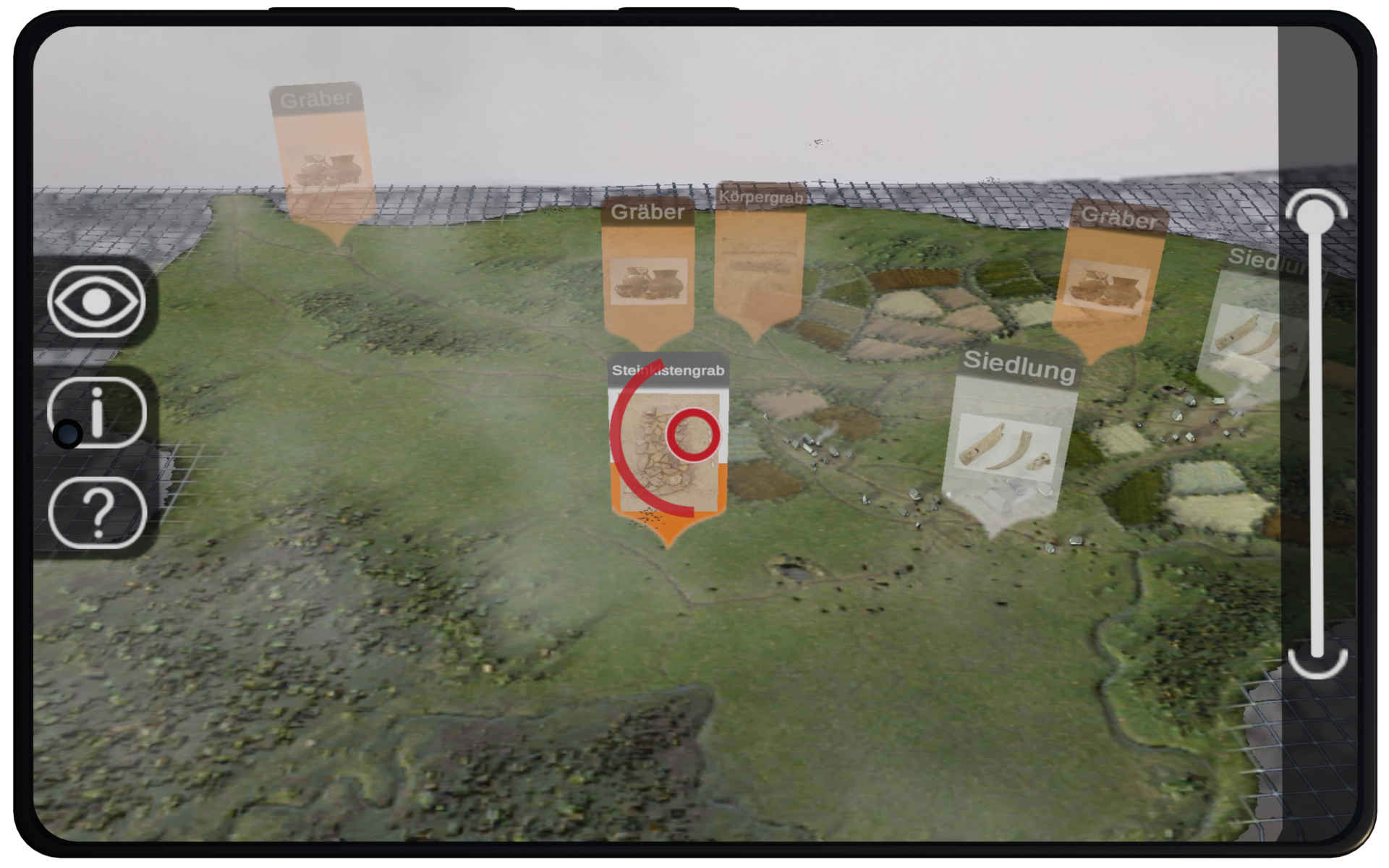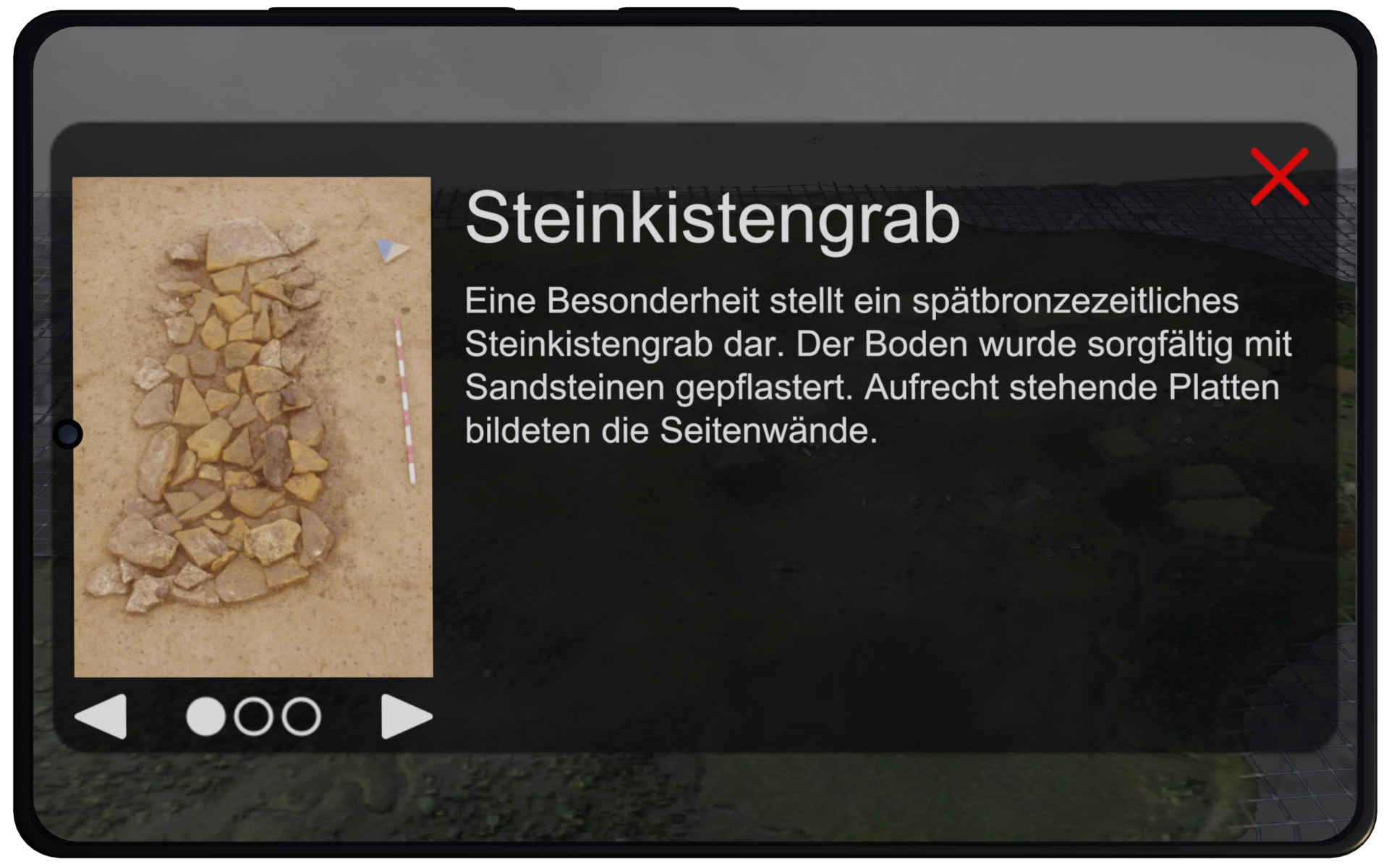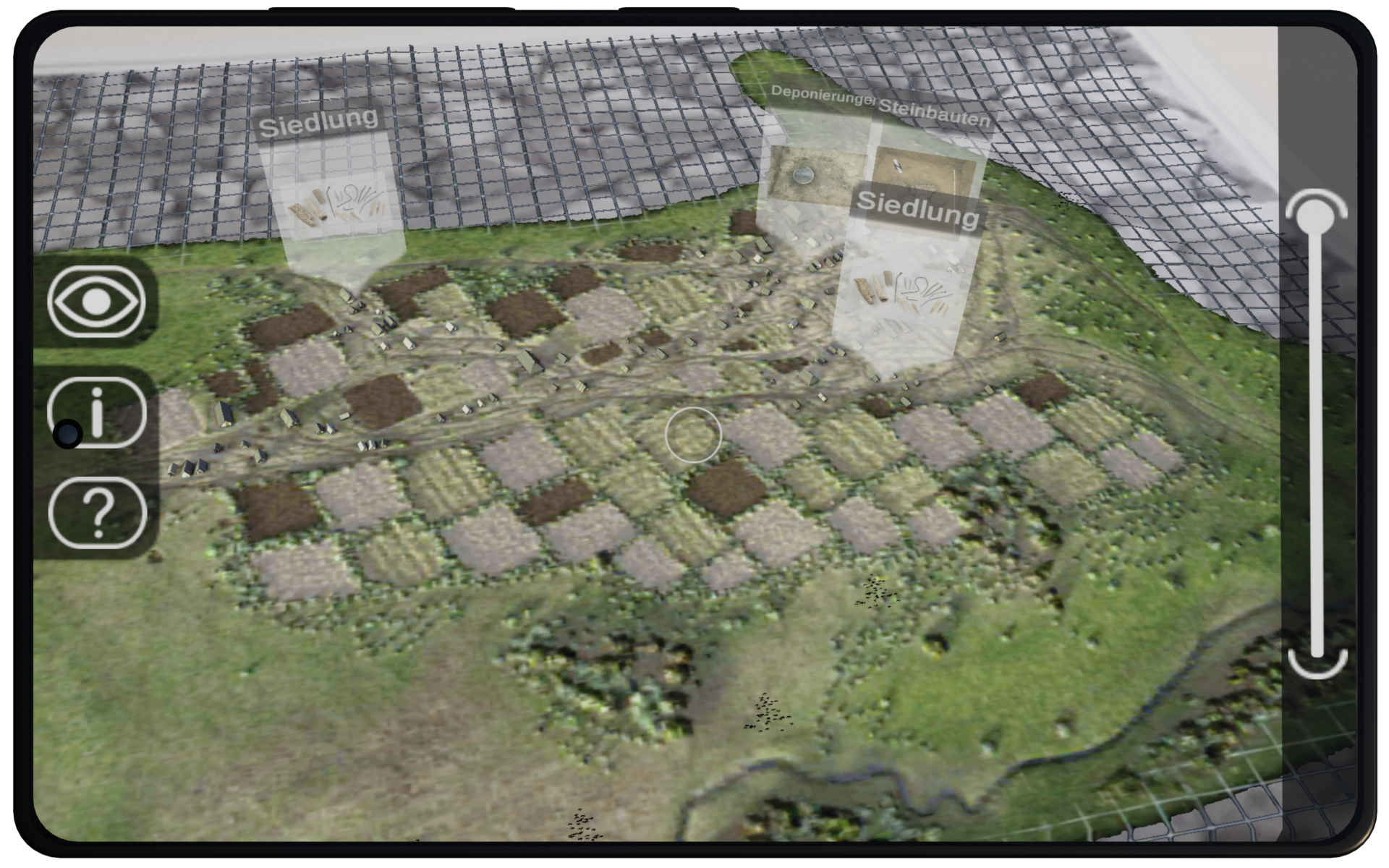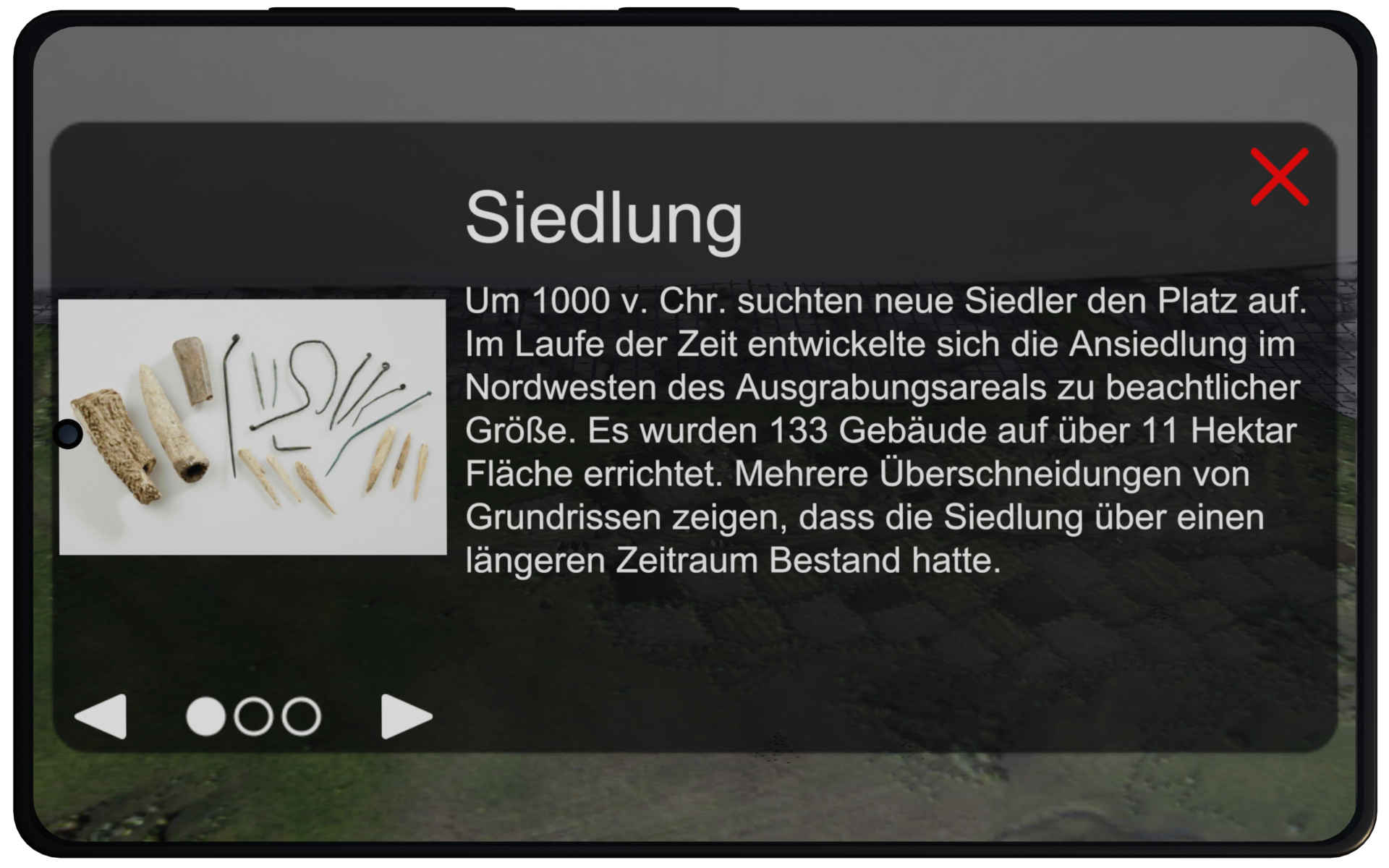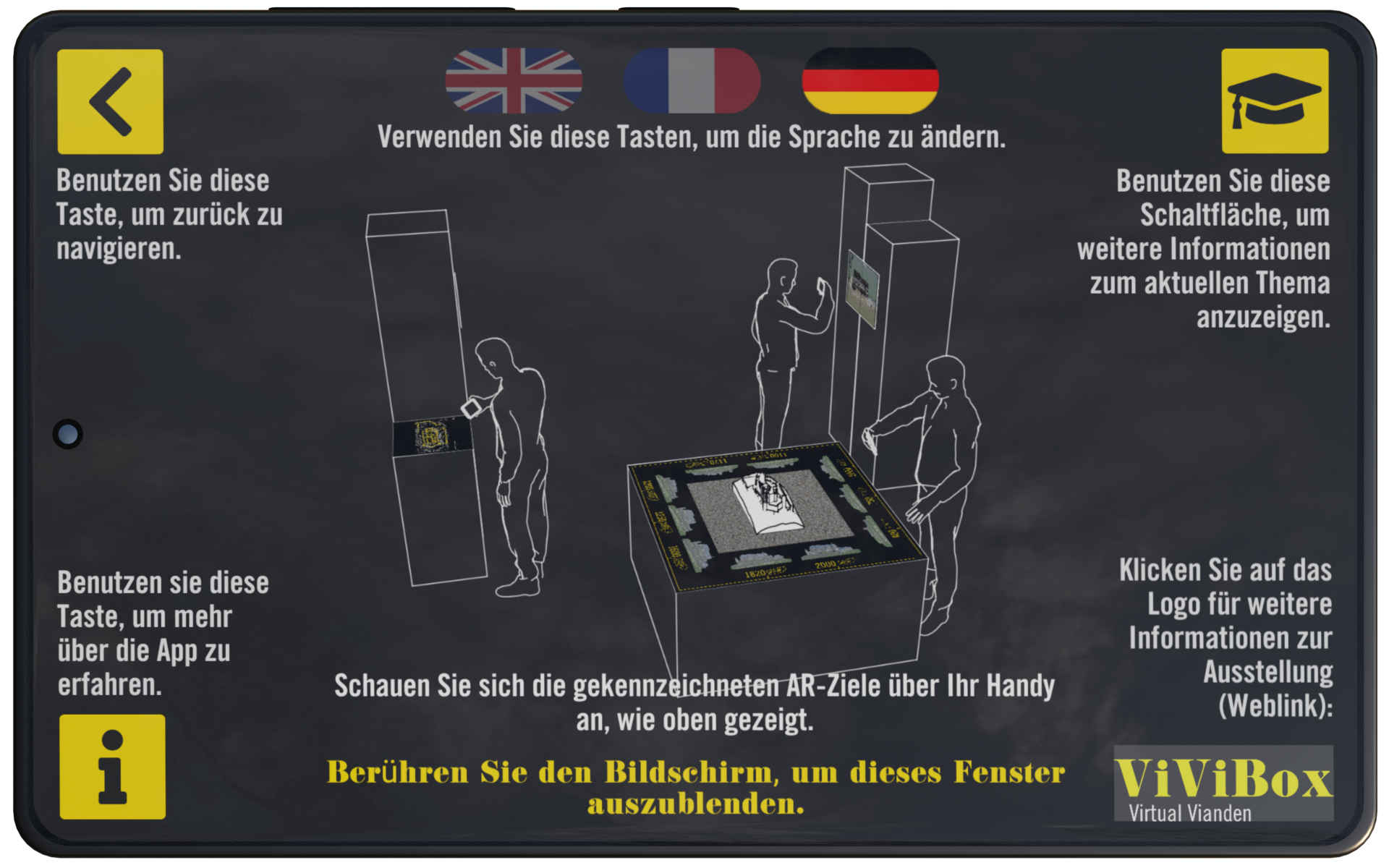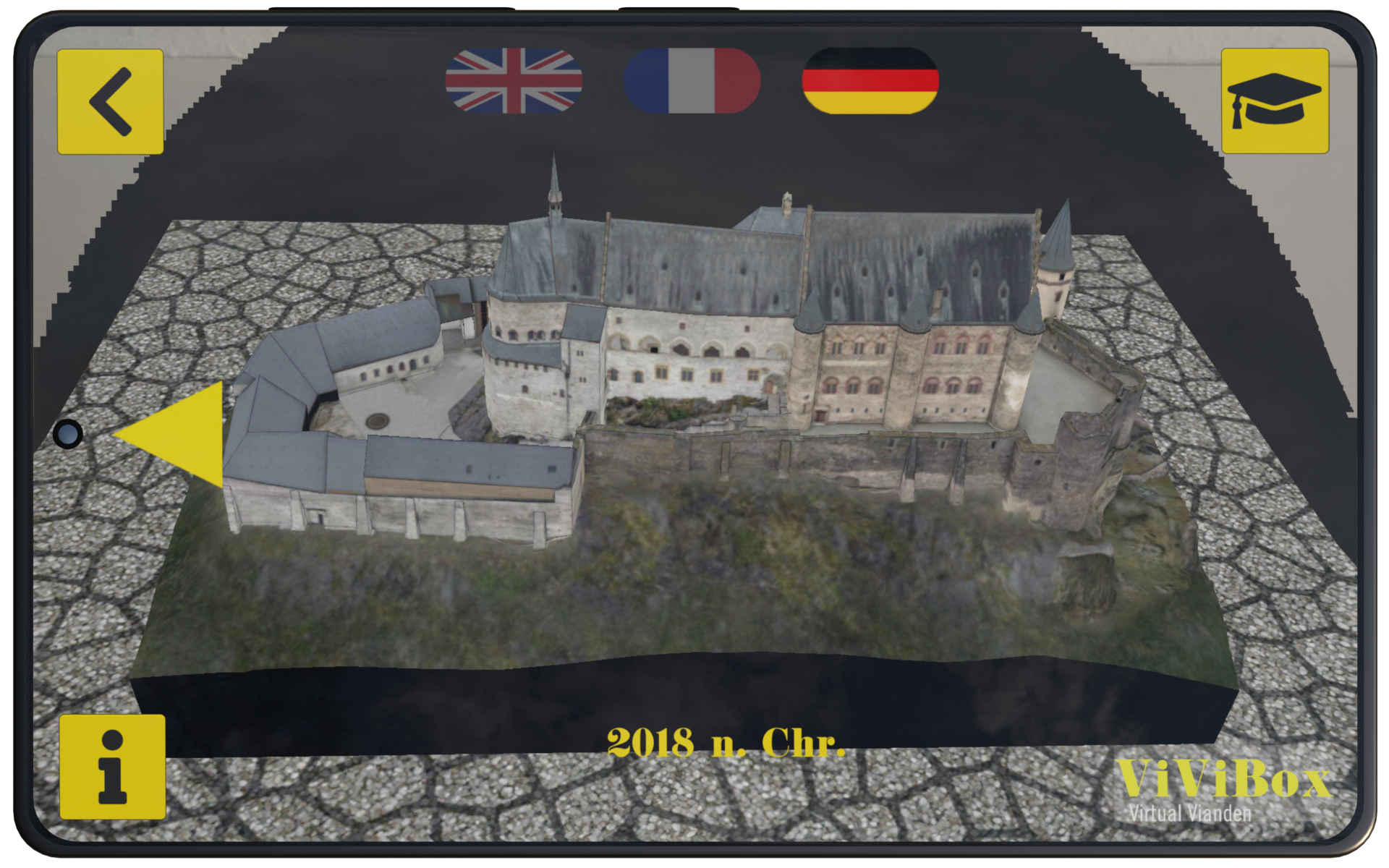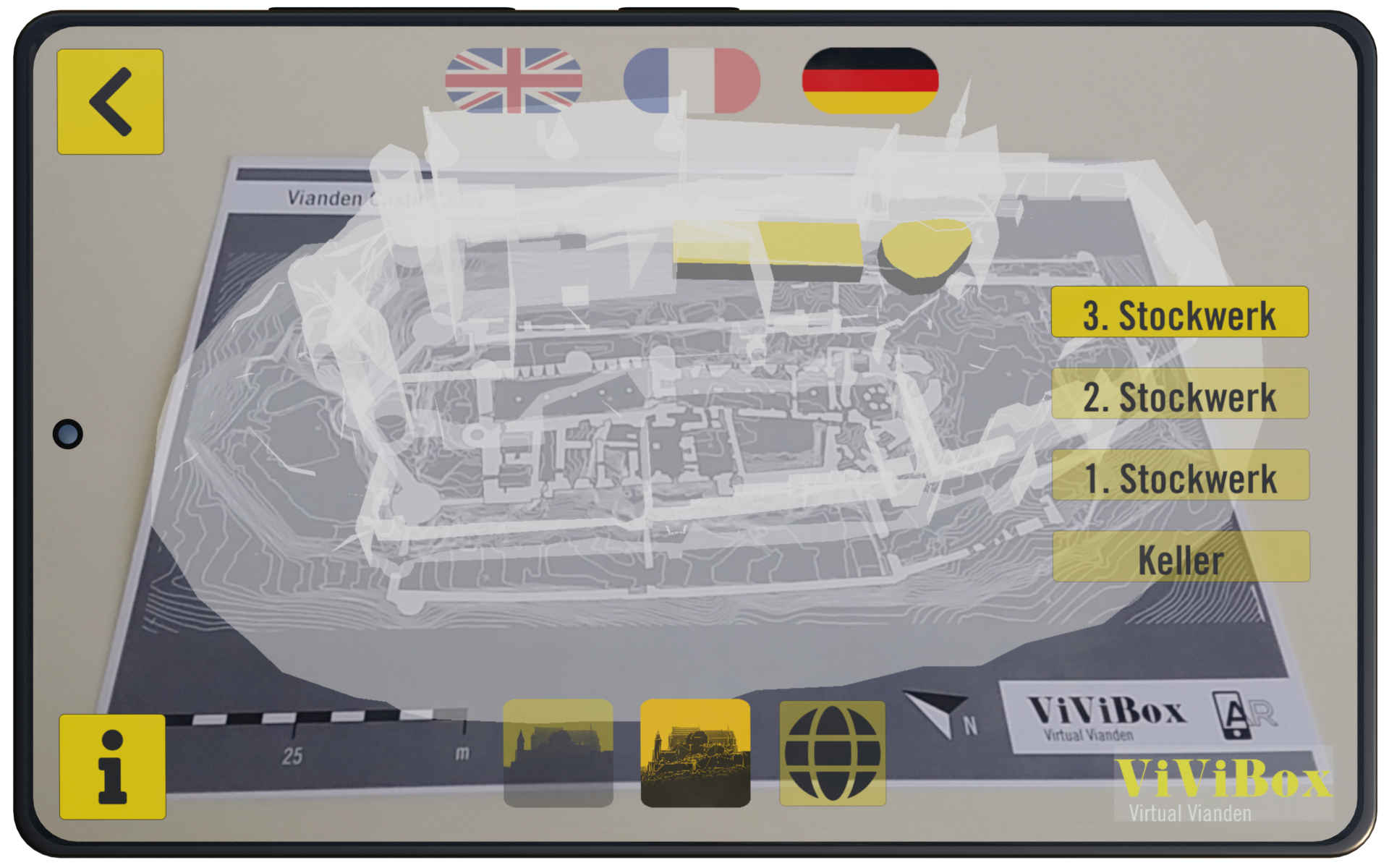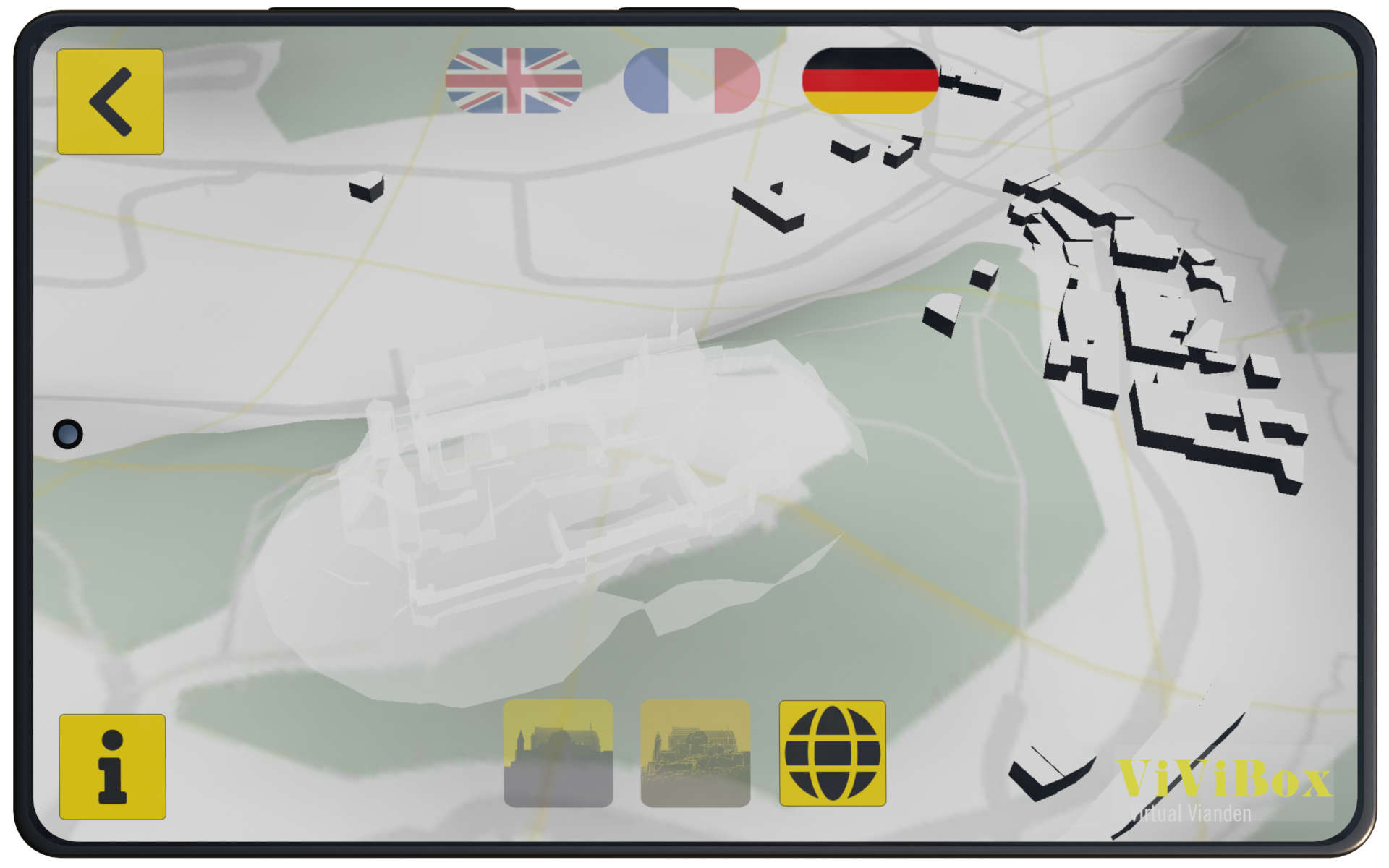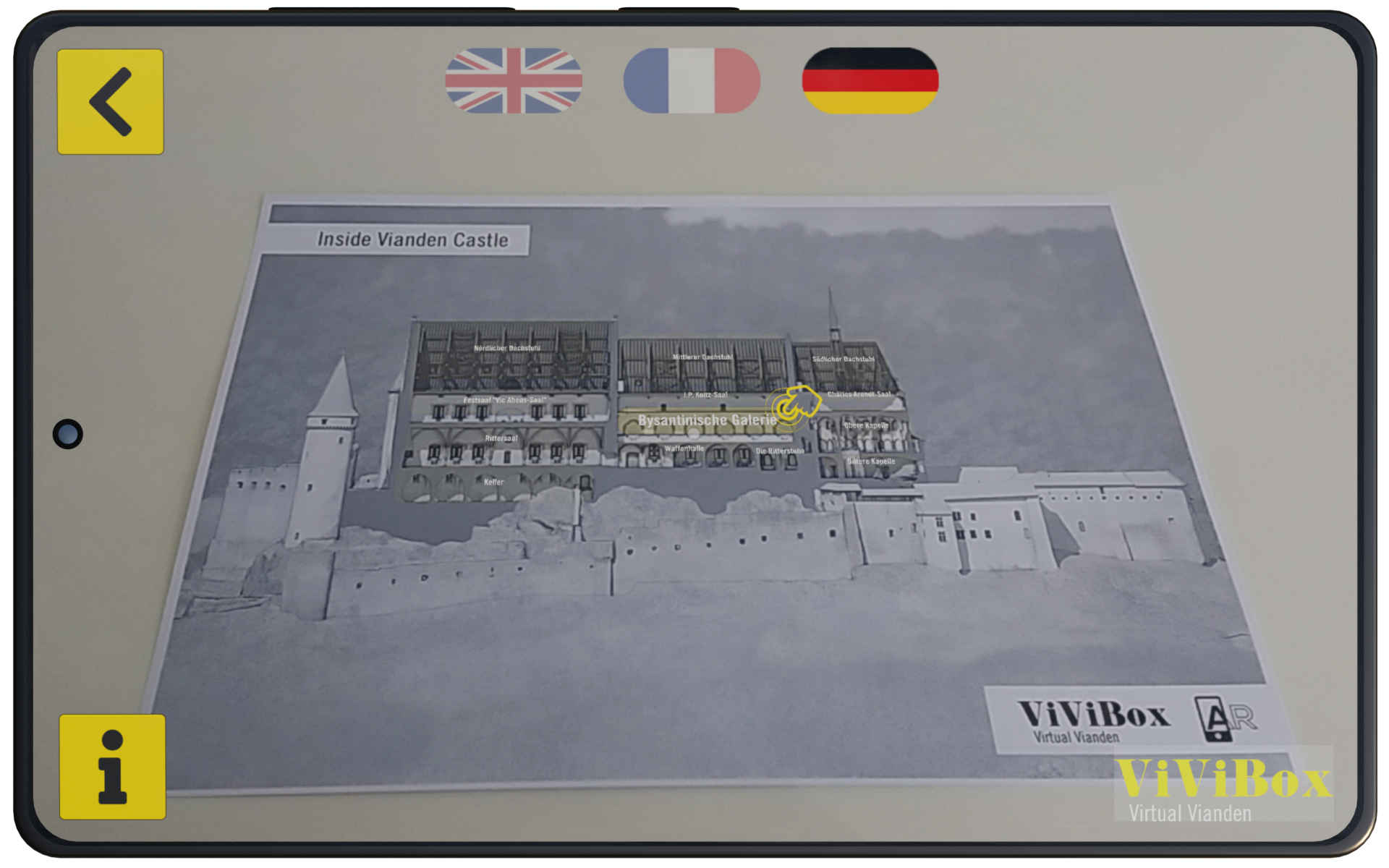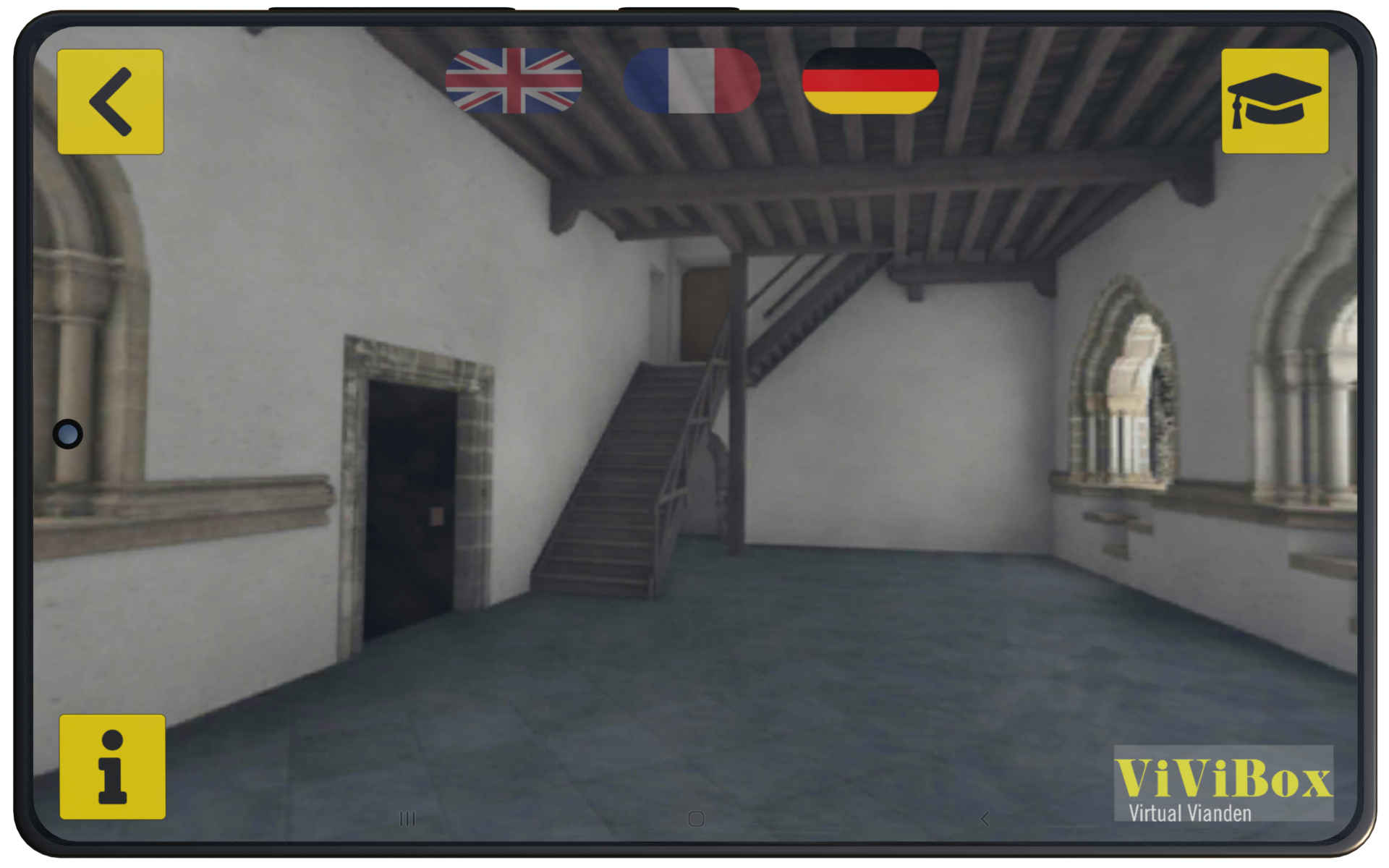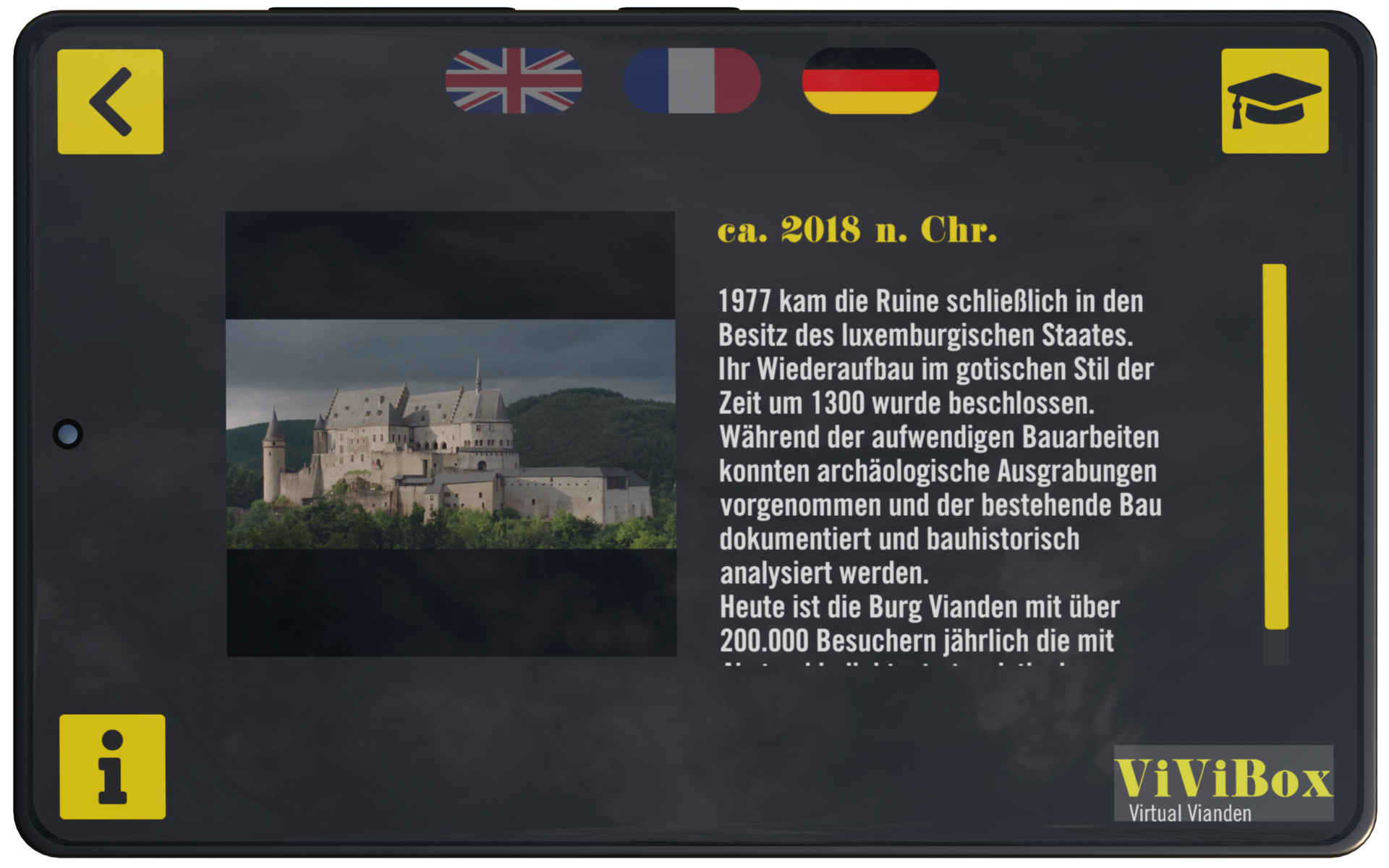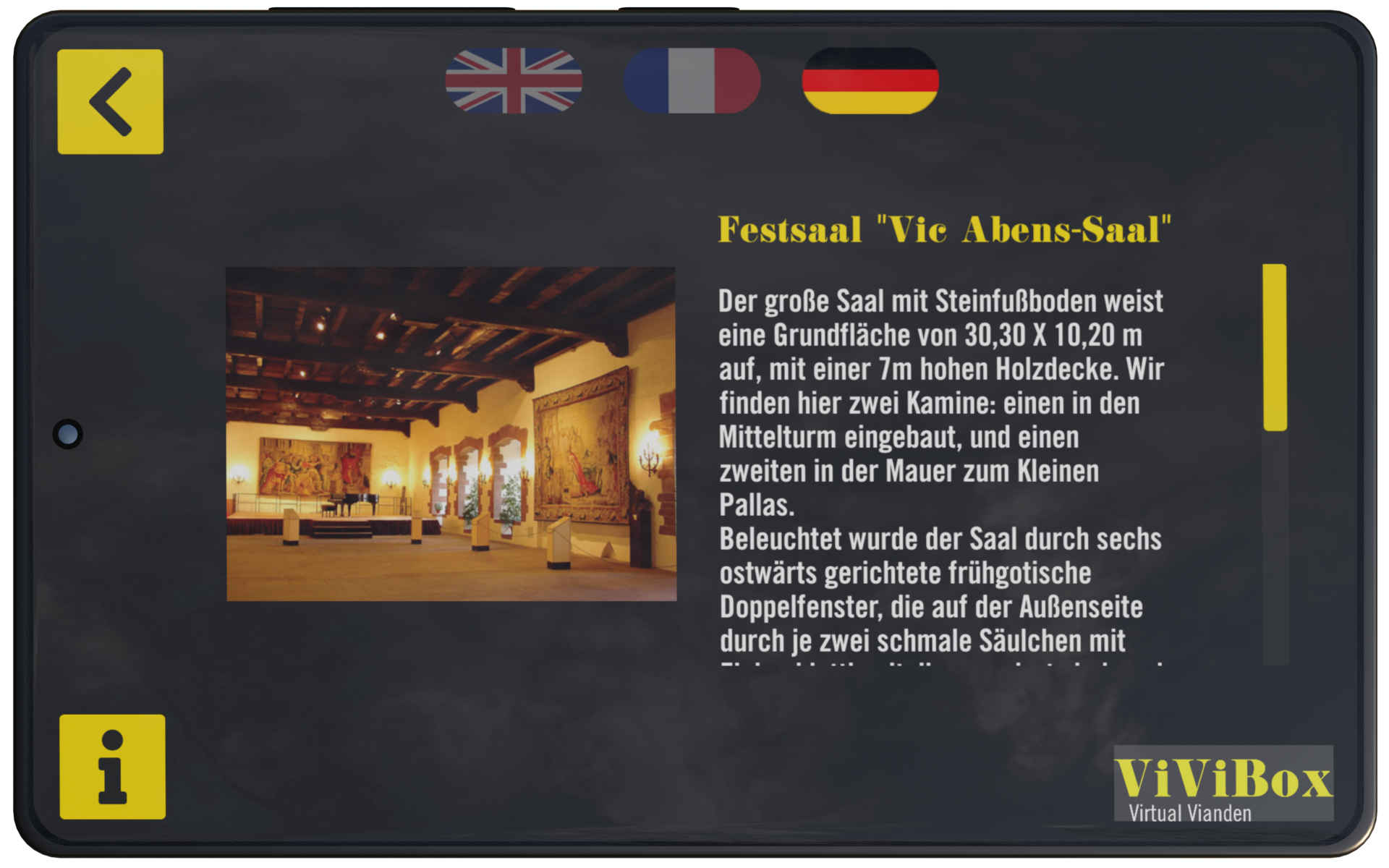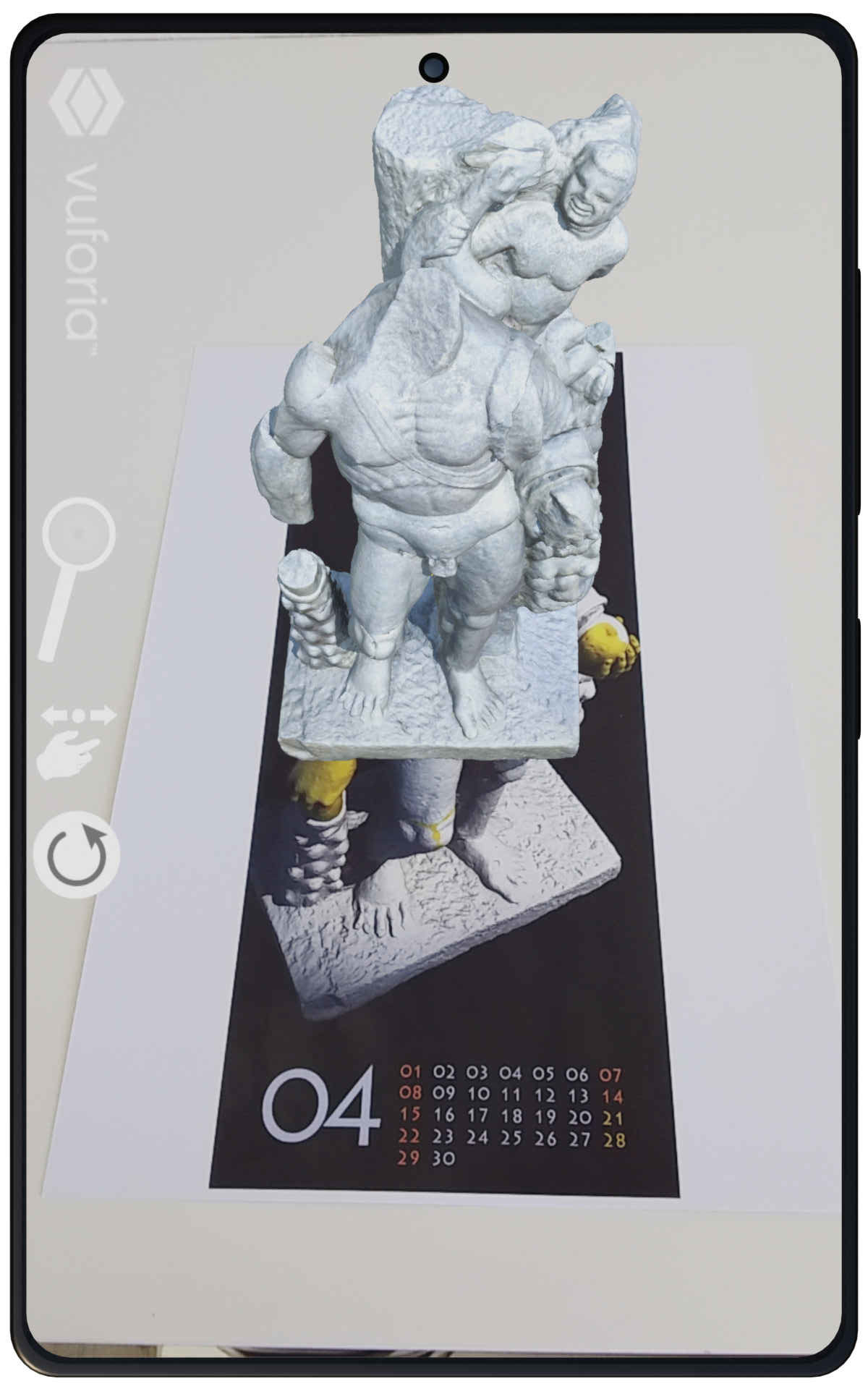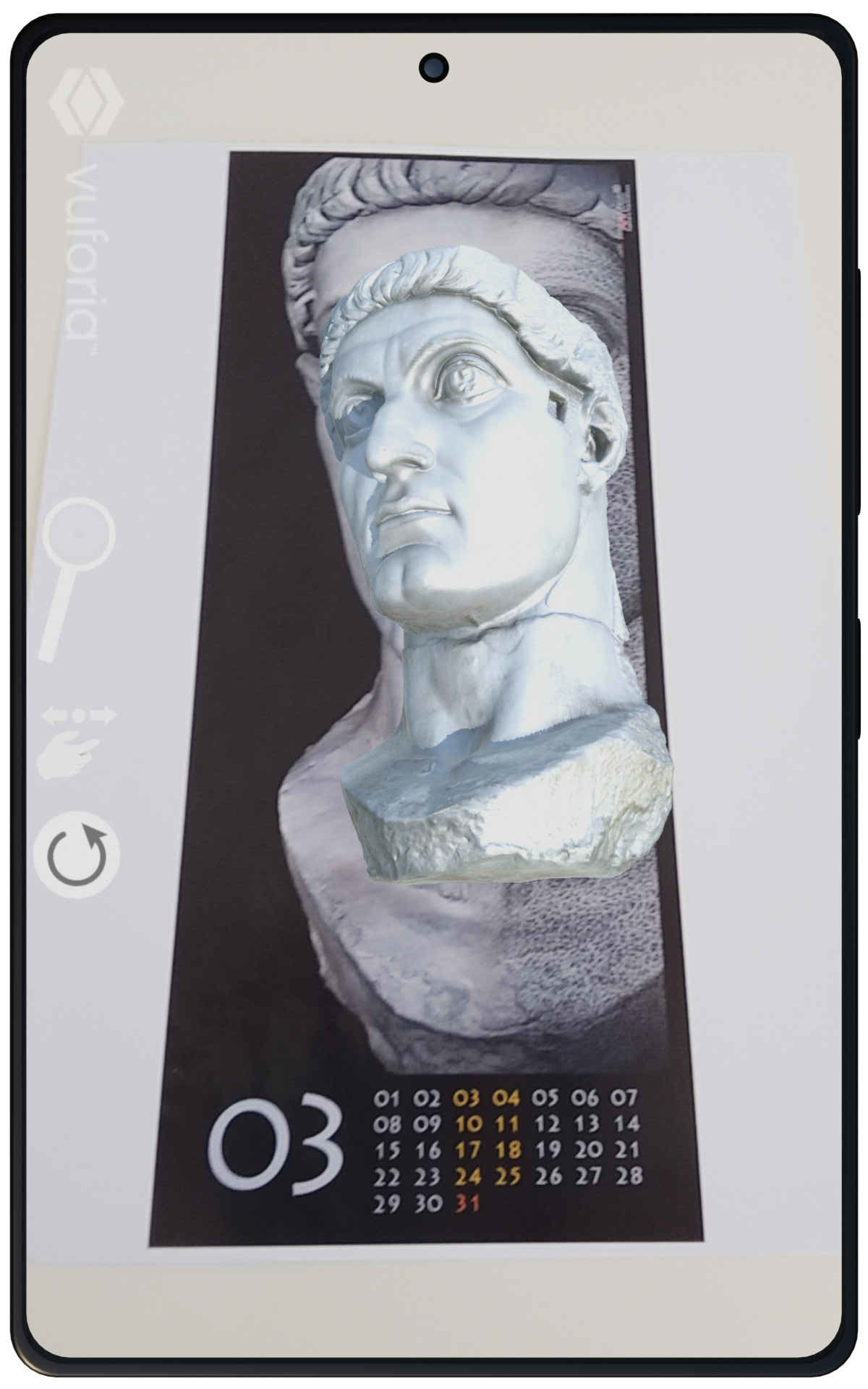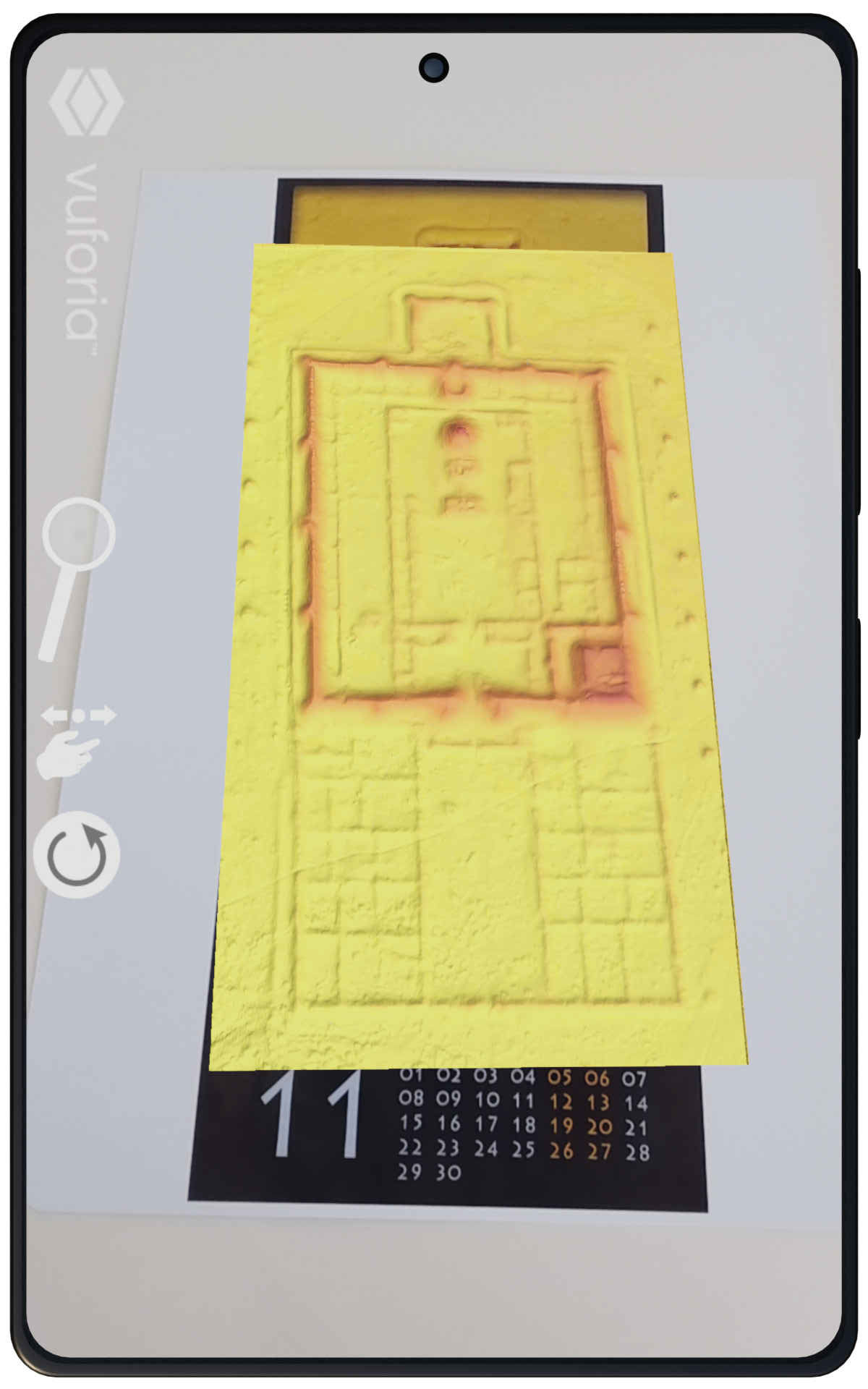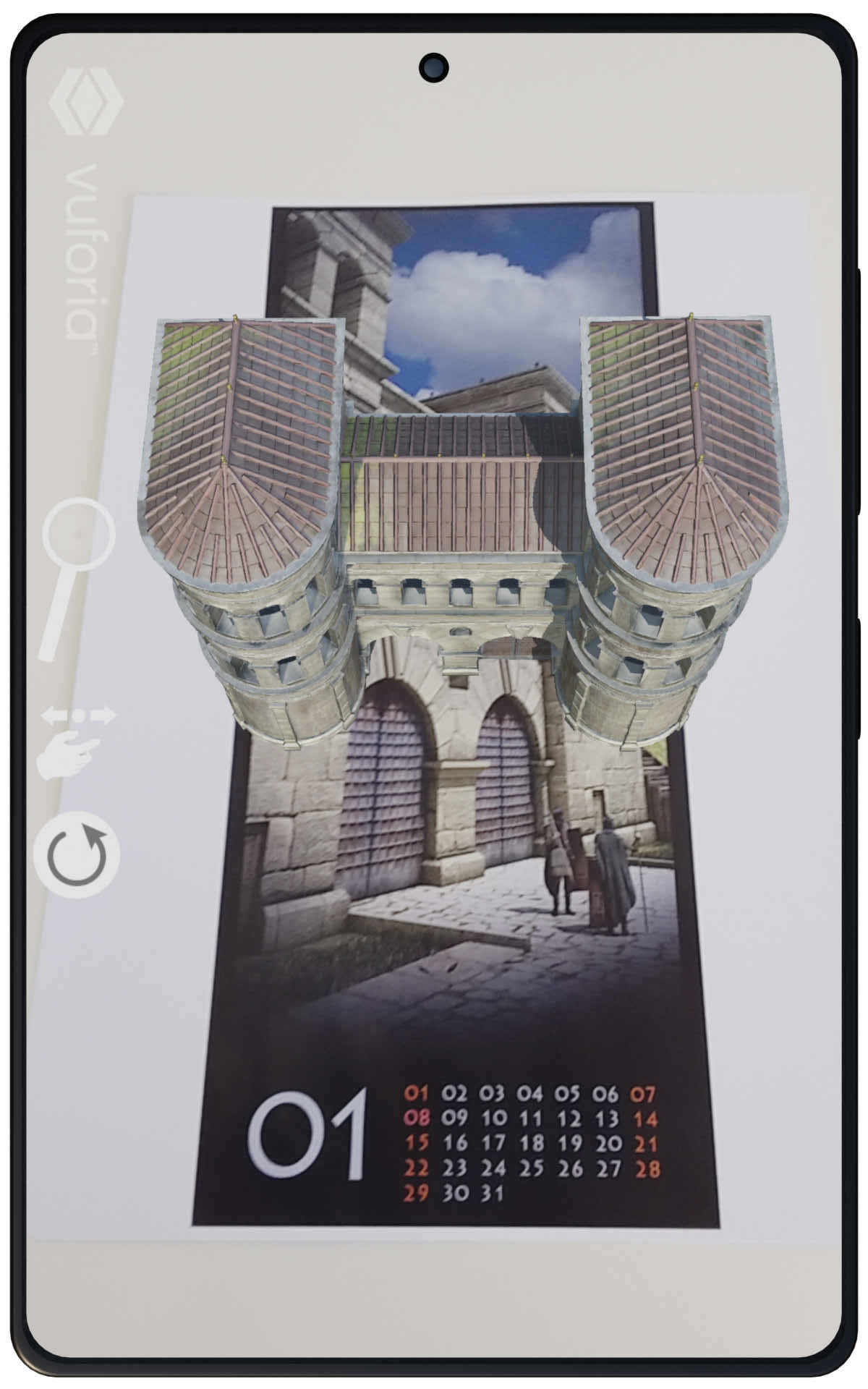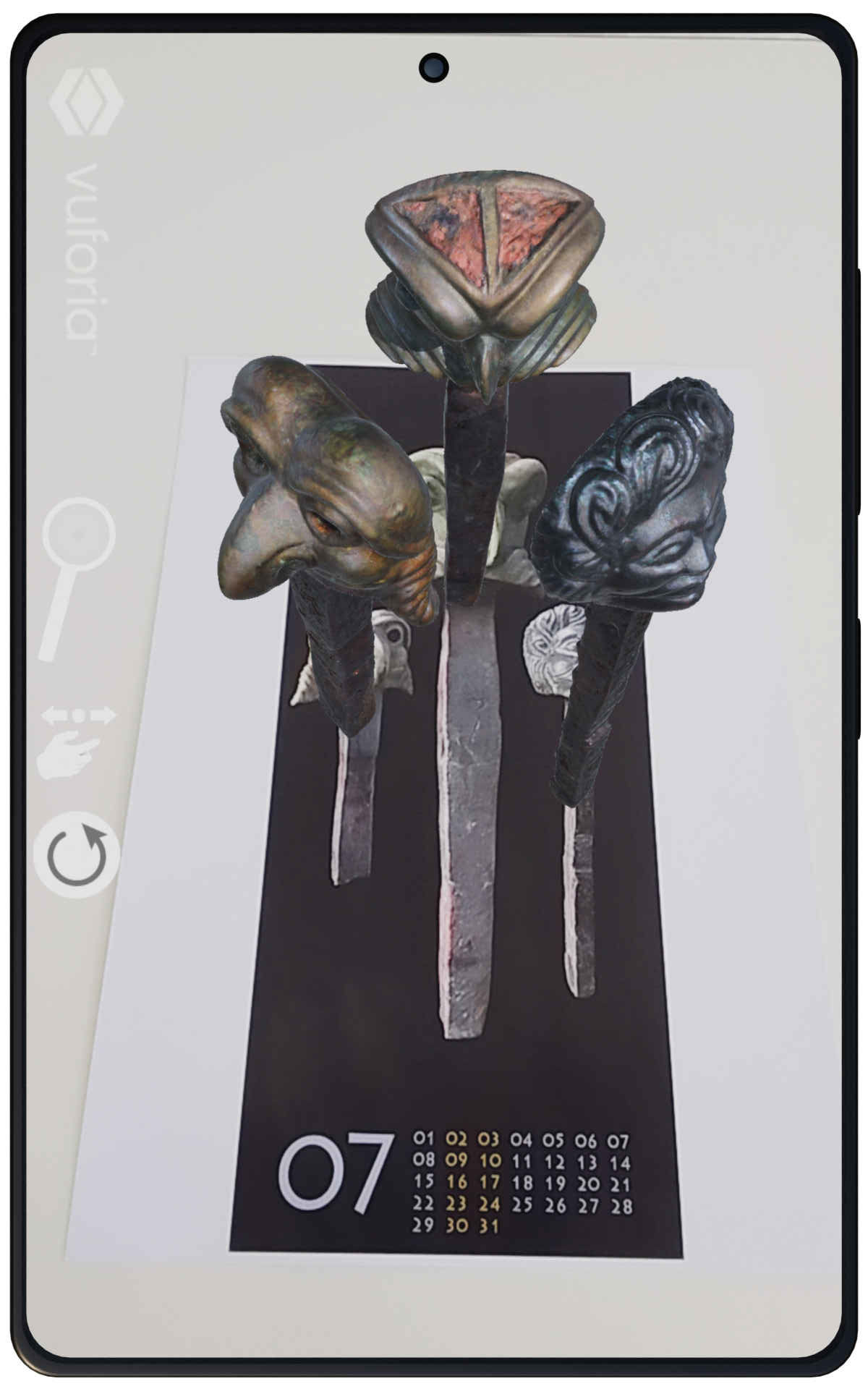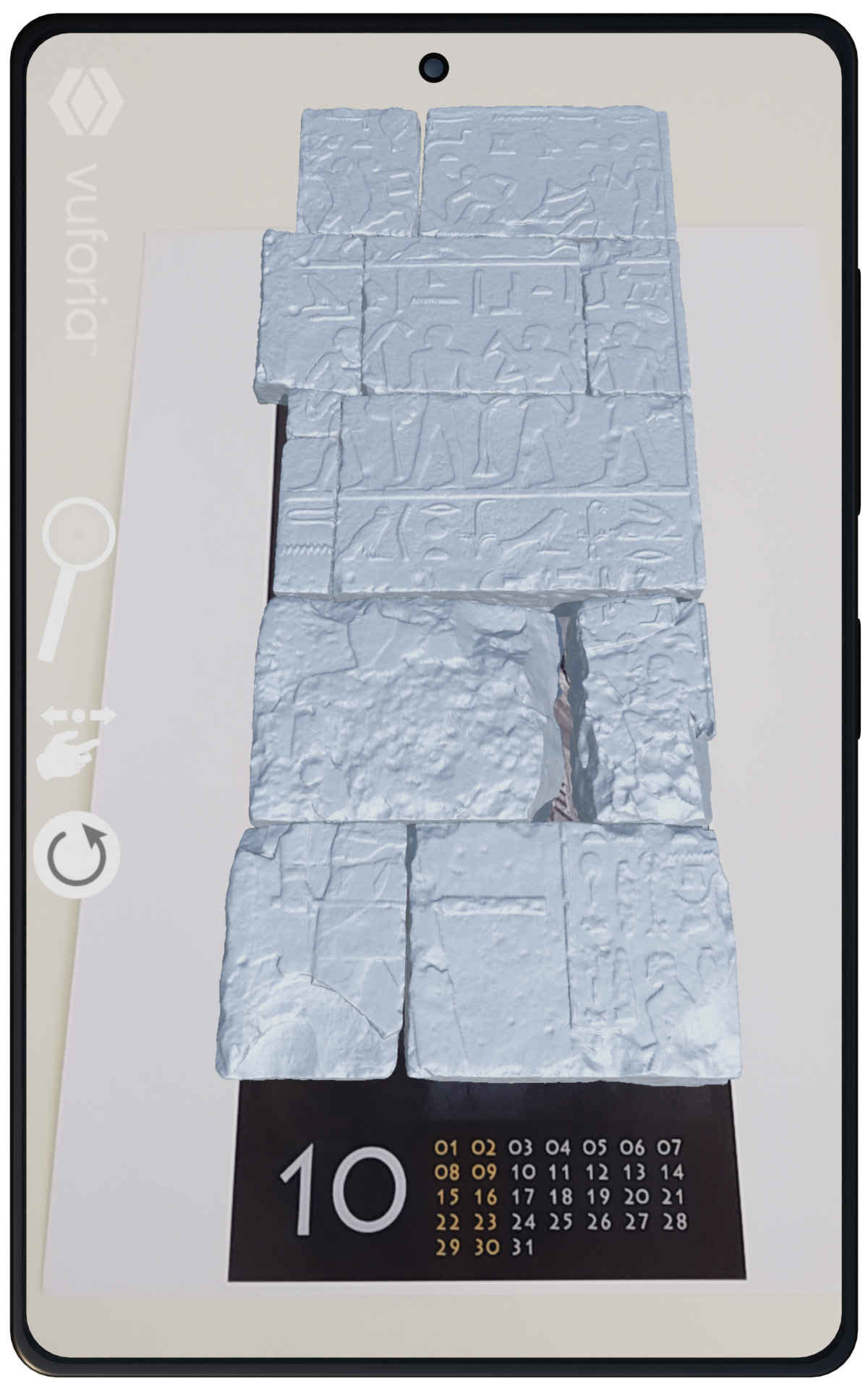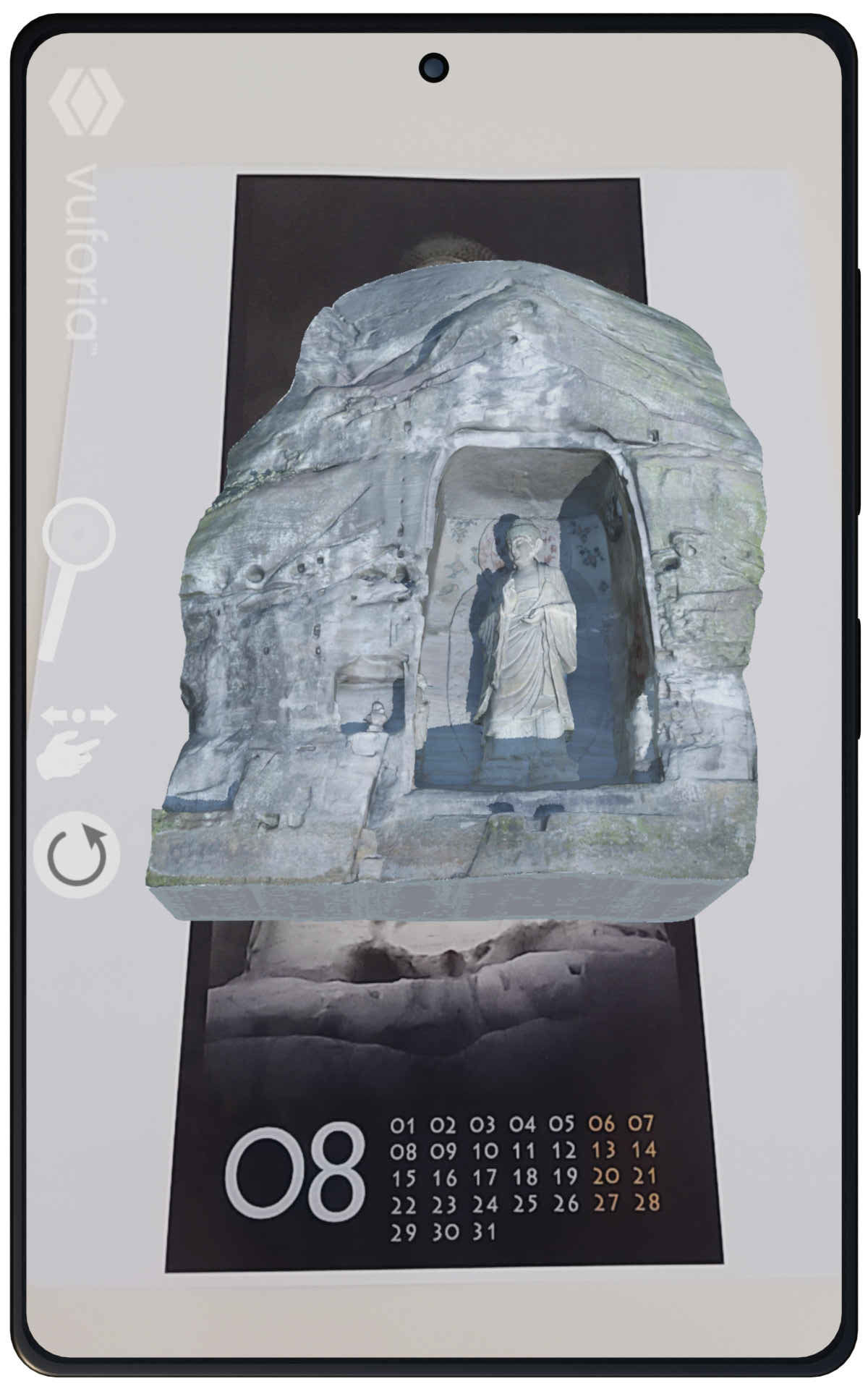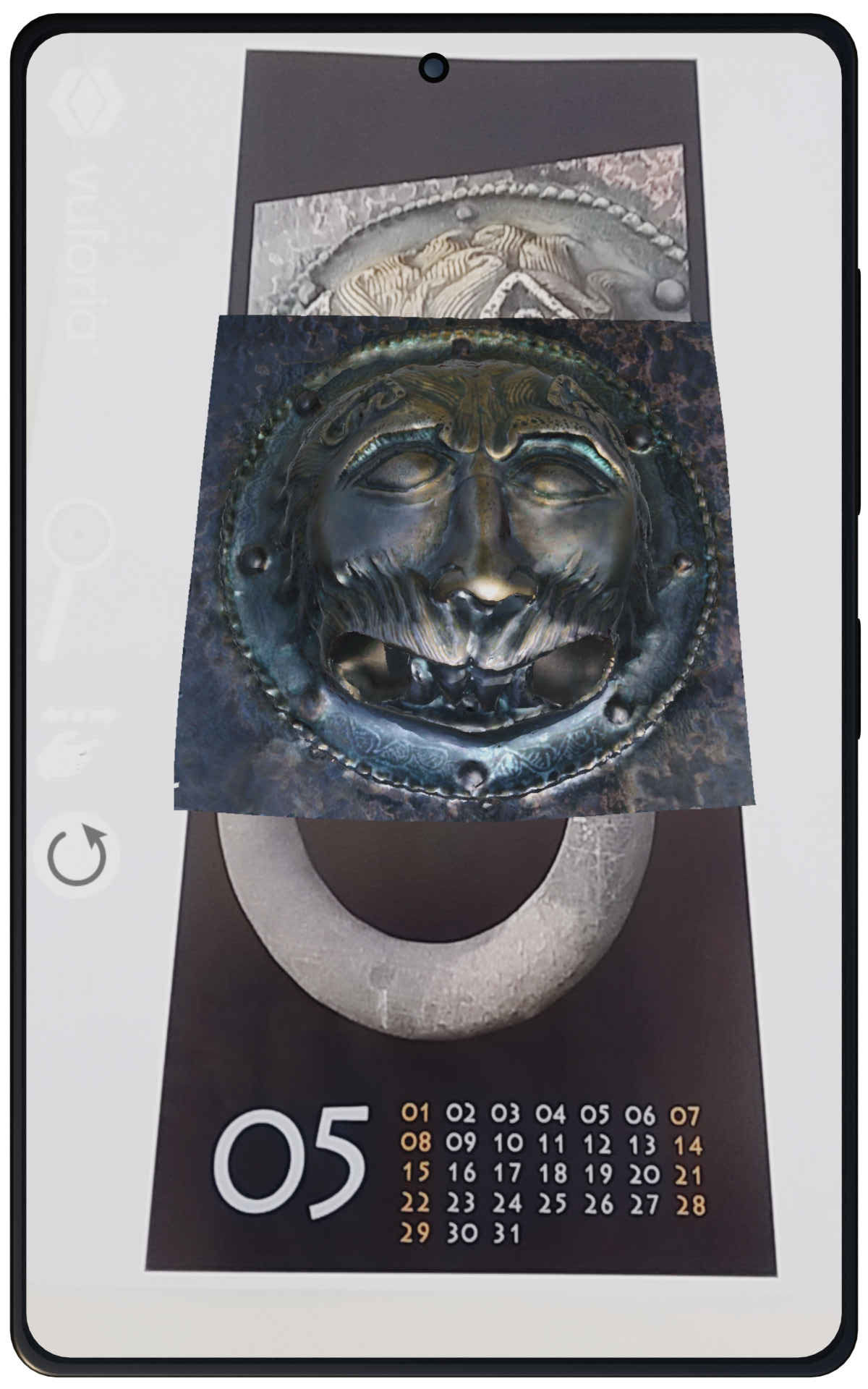Augmented Reality
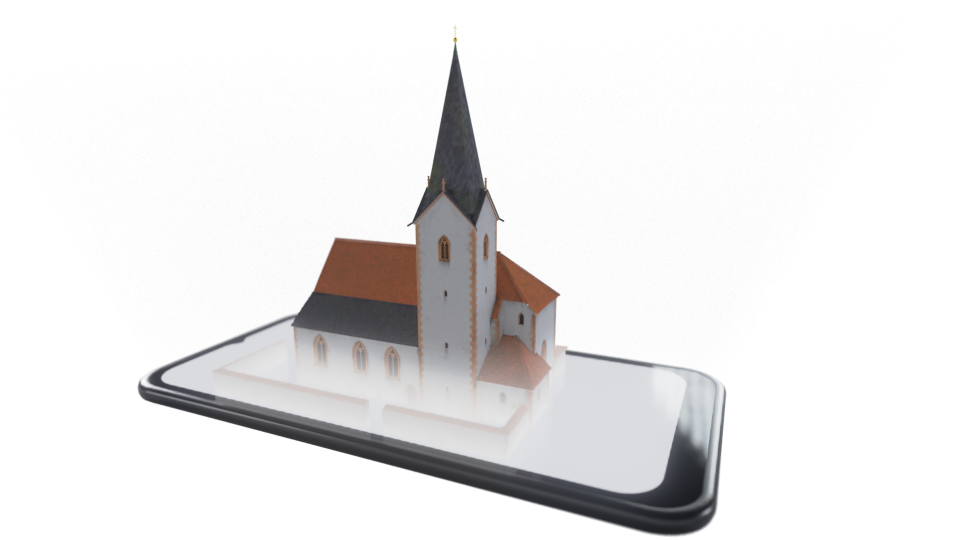
Augmented Reality App Development
For several years we have been intensively engaged in the development of Augmented Reality applications. In our special field around 3D for fairs, exhibitions and museums there are a lot of exciting possibilities.
In our special field around the sustainable use of various 3D technologies for national and international museums, exhibitions, presentations for culture, preservation of historical monuments, archaeology and many more, an extensive range of usable options comes together for our customers. Therefore, we also offer a variety of exciting possibilities around the digital knowledge transfer in AR – which will most likely become an integral part of the future support.
The advantage of AR apps lies not only in the possibility of expanding the environment of the respective user with media content. Considerable added value also results from the so-called “bring your own device” concept, in which the applications provided rely on the mobile devices that visitors bring with them.
We create educational AR content as well as entertaining content with a fun factor.
Services
- complete AR project conception, development and tailoring for your individual needs
- creation, preparation and optimization of virtual exhibition content
- creating and integrating objects to be augmented (e.g. target images (so-called “image targets”), haptic objects, real landscape, etc.)
- exhibition design (AR markers) for the best possible use of the AR app (e.g. use of 2D and/or 3D markers)
- setting up websites and integrating multimedia content
- AR project publication in the store (Android; iOS)
- producing real-time 3D content for augmented reality and virtual reality
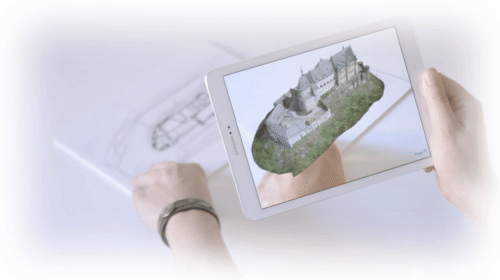
Museum objects
With reconstructions
History
Get in motion
Cultural sites
Historical architecture
Geology
The earth works
Modernize
With reconstructions
Project examples
Augmented Reality
The Regenstein is visible from afar in the foothills of the Harz Mountains. It is undoubtedly one of the most fascinating places here, which can now be interactively examined in detail with our AR app.
The Regenstein Fortress near Blankenburg in the Harz Mountains becomes an eventful virtual journey through time with many interactive 3D models. In the process, the 3D reconstructions are stably superimposed on the real findings in the landscape and can be experienced up close in their condition from 1670 to 1758.
The AR app is accompanied by a homepage, which secures part of the inclusion measures and also serves to ensure that visitors with older mobile devices are not excluded from the digital experience.
Operation of the AR app
Is it difficult to use such an app? No! Each of our AR apps shows a small mini-tutorial directly after startup and is basically designed so that it can already be used with as few barriers as possible. Texts and content for subject matter experts and interested visitors are available on the accompanying website.
Interaction
After a visitor has scanned an AR-capable panel permanently installed in the fortress grounds with his or her own mobile device, original buildings from the garrison period can be stably flashed across the real landscape at their respective positions and, depending on the terrain, even circumnavigated.
Additional info points integrated in the AP app enable the retrieval of further interesting digital content about the buildings augmented at that moment.
Augmented Reality
On the Scheidegger Wasserfälle geo adventure trail, visitors can not only experience the breathtaking beauty of nature and geological time windows on the earth’s history up close, but with our multimedia AR app, the visit becomes an eventful virtual journey through time. Here, guests with mobile devices can expand the reality surrounding them with digital content and thus experience nature in a class of its own. For example, you can immerse yourself in the virtual Riedbach stream and experience its former landscape-shaping power up close, or bring fossils to life and marvel at the biodiversity that once existed in the Allgäu.
Operation of the AR app
In this AR app, visitors can expect not only our mini-tutorial, but also the animated 3D mascot “Steiny”.
Interaction
The Scheidegg waterfalls are not only among the regional highlights of the Allgäu. This wildly romantic river landscape is an extraordinary natural experience that is also one of the 100 most beautiful geotopes in Bavaria.
With the expansion of the hands-on and information offers for young and old, our AR app was also created, which expands 3D models and information boards set up on the Geopad with digital content. Matching adventurous stations, such as “The Classroom in the Green” or “Master Builder Bach”, you have a lot of fun and above all a great learning effect – and all that in the middle of nature.
Augmented Reality
For the special exhibition “Death in the Salt – An Archaeological Investigation in Persia” we were allowed to program an AR app, which comprehensively digitally expands the exhibition. The guests go on a search for clues about the circumstances of a mining accident about 2,400 years ago in Douzlakh/Iran and experience a particularly interesting journey through time, with many unexpected “aha effects”.
Operation of the AR app
After launching the easy-to-understand app, the user is shown a small mini-tutorial to help them.
Interaction
In the exhibition on site, visitors can expect easy-to-understand thematic areas that are designed as a tour. At the respective showcases, exhibits, panels and artifacts, QR codes point to AR content that can be accessed.
Digital information points are also available on the “Mummy” exhibition model and can be accessed via guests’ mobile devices. Corresponding notes on the exhibitor make this option clear.
By the way: The scaled haptic 3D model of the Iranian mine that we produced for the exhibition was also equipped with AR info points that provide information about finds such as mummies, tools and salt mining.
Augmented Reality
Our demo version of a high-quality accessible AR app, which we were allowed to develop for the Ludwigsburg Residence Palace in 2020, shows that AR apps can also be executed with high-quality graphics and still be suitable for most mobile devices.
Interactive storylines and virtual exploration – this AR demo lets you experience history in a very special way.
AR map shows the locations of the finds and features
Under the motto “Traces of the millennia – 25 years of large-scale archaeological excavation Burgweinting”, a special exhibition in a class of its own was opened on September 21, 2019. On display are, among other things, countless finds and findings whose many years of restoration and scientific evaluation were realized at the Bavarian State Office for the Preservation of Historical Monuments and the Historical Museum.
Fusion of laser beamer projection and AR app
As a highlight for this exhibition, ArcTron 3D GmbH was allowed to create an AR app (incl. 3D animations) with which visitors can closely examine the landscape images of the discovery regions projected by means of laser beams. In the process, the discovery tour becomes an experience for everyone thanks to an accessible photo floor and a separately set up 3D-printed terrain model, as these invite visitors to explore with their mobile devices.
Background information can be called up interactively
Here, not only reconstruction proposals for the respective settlement landscapes with period-typical houses can be retrieved, but also finds, findings and their background information.
Augmented Reality
We were allowed to start the comprehensive reappraisal of Vianden Castle in Luxembourg already with a complete documentation of the building in 2007. In order to achieve the project goal “Virtual Vianden” in the best possible way, this was followed by numerous further commissioned modules, which finally lead up to a complete multimedia and interactive 3D visualization through 10 phases, from late Roman antiquity to today’s museum-like castle.
Today, visitors can use a multimedia AR & VR app to experience a thrilling digital interactive journey through time through more than 1,000 years of building history, exploring not only spectacular details but also taking on “dizzying” airy posi-tions that can only be reached digitally.
Finally, with the “Virtual Vianden Box” completed in 2018, a new type of mobile exhibition platform was created, which traveled the countries of Luxembourg and Germany with the overall digital project from 2018 to 2019 and was on display at numerous trade fairs and events.
Operation of the AR app
This AR app, which is particularly easy to use, introduces users to its operation immediately after launch.
Interaction
The ViViBox provides various stations for visitors to use the augmented reality app and virtual reality application. For the AR app, in addition to 3 different target images (image targets) in the center of the ViViBox, a 3D-printed model is also available.
With the AR app, you can basically use 3 different ways of digitally augmenting reality (augmentation) in the ViViBox:
Projection of a phase visualization onto the floor plan of Vianden Castle: In this AR application, the different phases of the building can be interactively switched through and viewed – starting 400 years after Christ, up to the year 2018 – which can be generally described as the state “today”.
Projection of a virtual room directory onto a cross-section of today’s building: Here, any room can be targeted and viewed interactively after selection. The special highlight is that after switching to the mode for interactive viewing, the target image (Image Target) no longer needs to be fixed. This allows the user to look around freely in the respective room.
In the third application variant, a semitransparent 3D model of Vianden Castle is superimposed on a geological height profile. In this “cubature”, depending on the selected floor, the rooms are located for further selection.
In all view variants of the AR app, additional information is available via an info button, so that technical experts and interested people also get their money’s worth.
Burst aluminum roller
In 2018, we were allowed to carry out a high-precision 3D measurement for an aluminum processing company. A roller had burst during the production process and the manufacturer wanted to find out the cause of the problem with the help of the measurement data of the many burst individual parts – which was ultimately successful.
For interactive visualization, we modified the high-resolution 3D individual parts of the roller and realized them as a conceptual AR demo.
Principia Aalen
In spring 2017, ArcTron 3D was commissioned by the Archaeological State Museum to 3D survey the ruins of the principia of the Aalen equestrian fort from the year 208 AD and reconstruct them as a high-resolution, photorealistic 3D model.
During the conceptual development of sustainable exploitation possibilities for 3D models, an AR demo was also created in which the appearance of the staff building could be intuitively experienced.
Accompanying this, a three-dimensional tactile model of the ruin was also created for people with special needs.
As a highlight of this demo, not only an image of the findings but also 3D printing can bring the AR demo to proverbial “life.” While a lone Roman makes his rounds around the 3D reconstruction, a centurion is just gathering at the top.
The augmented calendar 2017
Augmented reality – the prevailing trend of a virtual extension of reality with one’s own mobile end device motivates ever new ideas and thus also internal test versions about the respective individual feasibility of new technologies. One example of this is the new “Physical Based Rendering”, or “PBR” for short. This makes it possible to realize a realistic surface rendering of digital models, which significantly enhances the quality of the virtual 3D model. In 2017, the possibilities of this technology led us to create a very special calendar. On 12 monthly pages, we still present our specially prepared 3D models and show that AR is not only future-proof but also timeless to a certain extent.
Experience in this calendar demo:
The 3D reconstruction of the Roman gate Porta Praetoria Regensburg
The 3D colossal portrait of Emperor Constantine
A 3D warrior of the terracotta army of the First Chinese Emperor Qin Shihuang
The 3D reconstruction of an almost life-size provincial Roman statue of Hercules based on an ancient image type
The three-dimensional Agilolfingian door puller in the form of a human-faced lion’s head
Three-dimensional extraordinary Bronze Age amber objects with Mycenaean symbols
Late Celtic bronze 3D axle nails with human and owl heads
The 3D reconstruction of the monumental Buddha Shakyamuni statue
The 3D fragment of the ancient Egyptian sacrificial chamber of Merib and Metjen
The 3D ruins of the Mongolian palace city Karabal gasun in the Orkhon valley
Bring Your Own Device
Dinosaurs have always been fascinating – and not just since Hollywood movies. Whether as a life-size concrete model in the Saurierpark Kleinwelka or a fossil from the Solnhofen hobby quarry – the enthusiasm for “dinos” is unbroken among young and old. Reason enough for us to have programmed a small AR application for the remarkably well-preserved fossil of the “Sciurumimus albersdoerferi” discovered in 2012 in Painten near Regensburg. This was already created in 2015, on the occasion of a presentation about the “digital possibilities with your own mobile device”. This trend, which comes from the USA and is increasing, is actually called “Bring Your Own Device”, or “BYOD” for short, and means: “Bring your own device”. Said – done. Focusing on the original or the digital reconstruction with our internal demo app, the digitally reconstructed and animated “Sciurumimus albersdoerferi” stands up from the slab limestone fragment and can be viewed freely. A playful element then rounds off the AR app – the virtual hunt for Pokemons.
Today, the 72-cm-long original is on display in outstanding quality at the Solnhofen Museum and fascinates visitors just like all the other finds. Slab limestones have it all – even Archaeopteryx is at home here.
